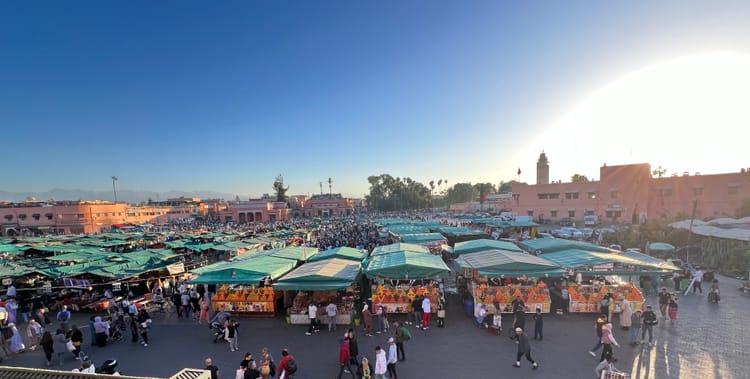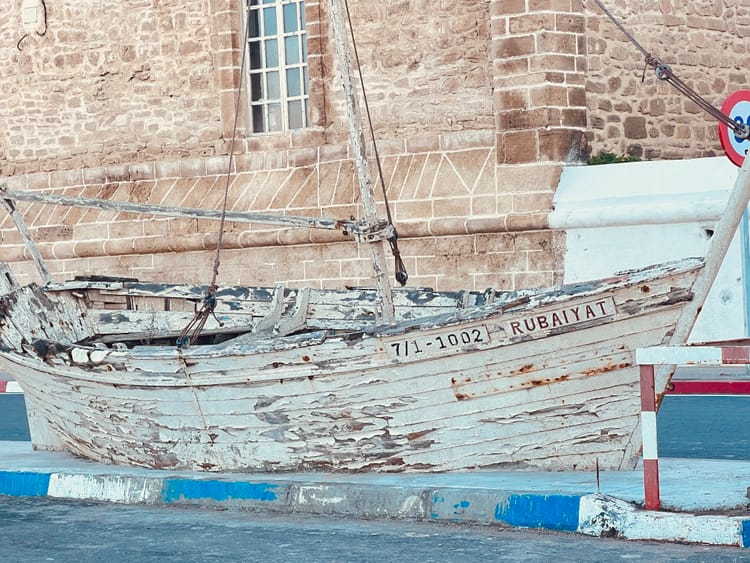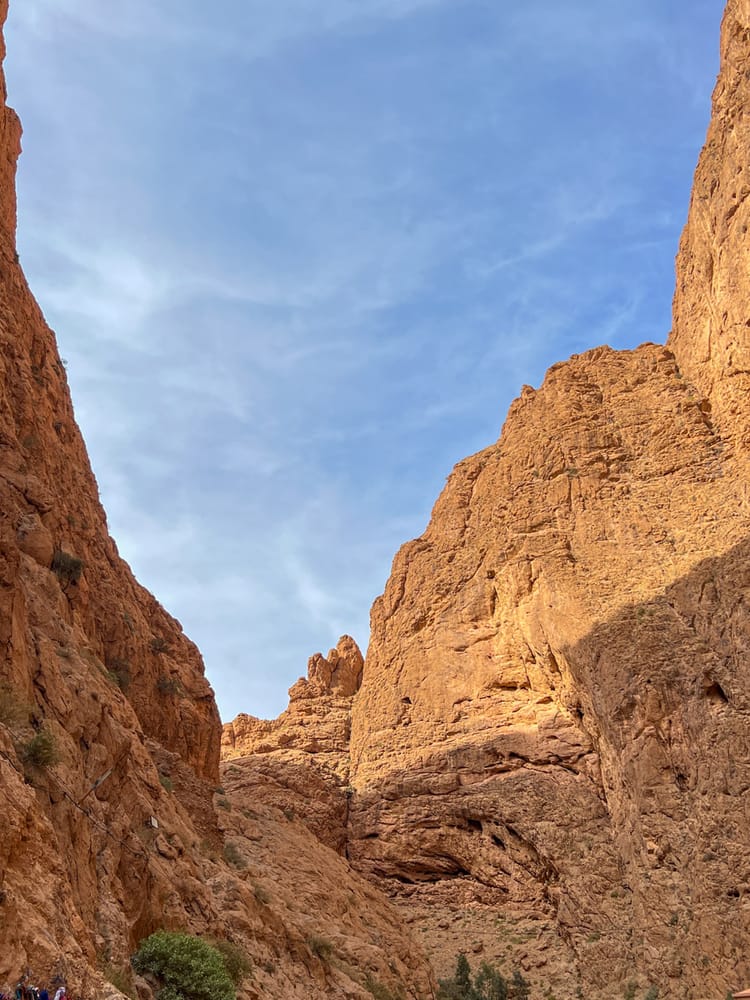Évora - Churches, Churches and More Churches... Portugal Part 4
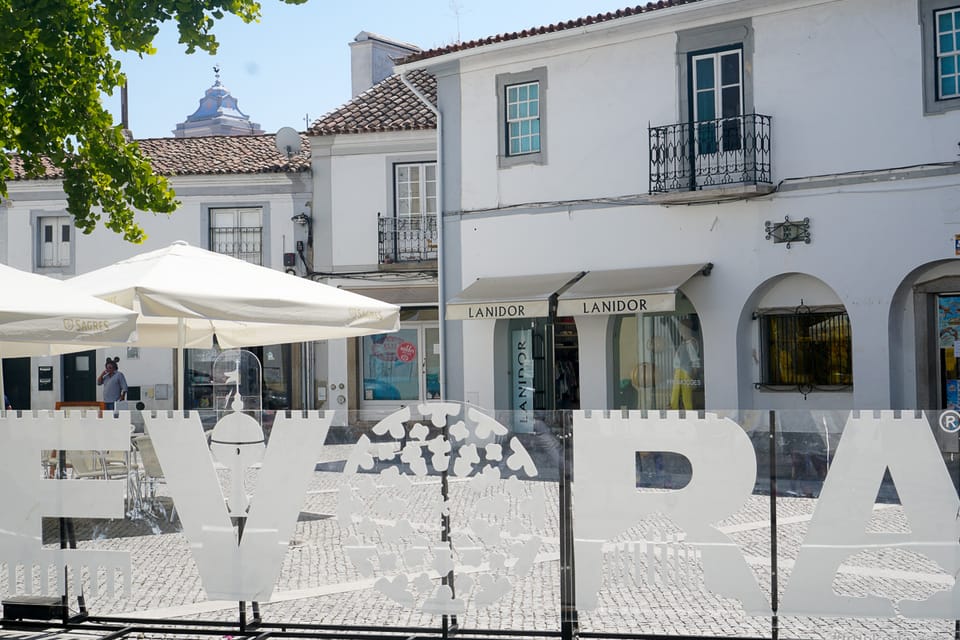
After Tavira, Évora was next, indirectly. We jumped into our little Fiat (I loved our little Fiat!) and headed to Ponta da Piedade headlands, an area of "dramatic limestone sea pillars, fragile rock arches and hidden grottos" along the coast near Lagos.
As this took us about 110 kilometres west of Tavira, we were not headed precisely in the direction of Évora! We had hoped to view the cliffs on our trip down from Lisbon to Tavira but somehow miscalculated directions.
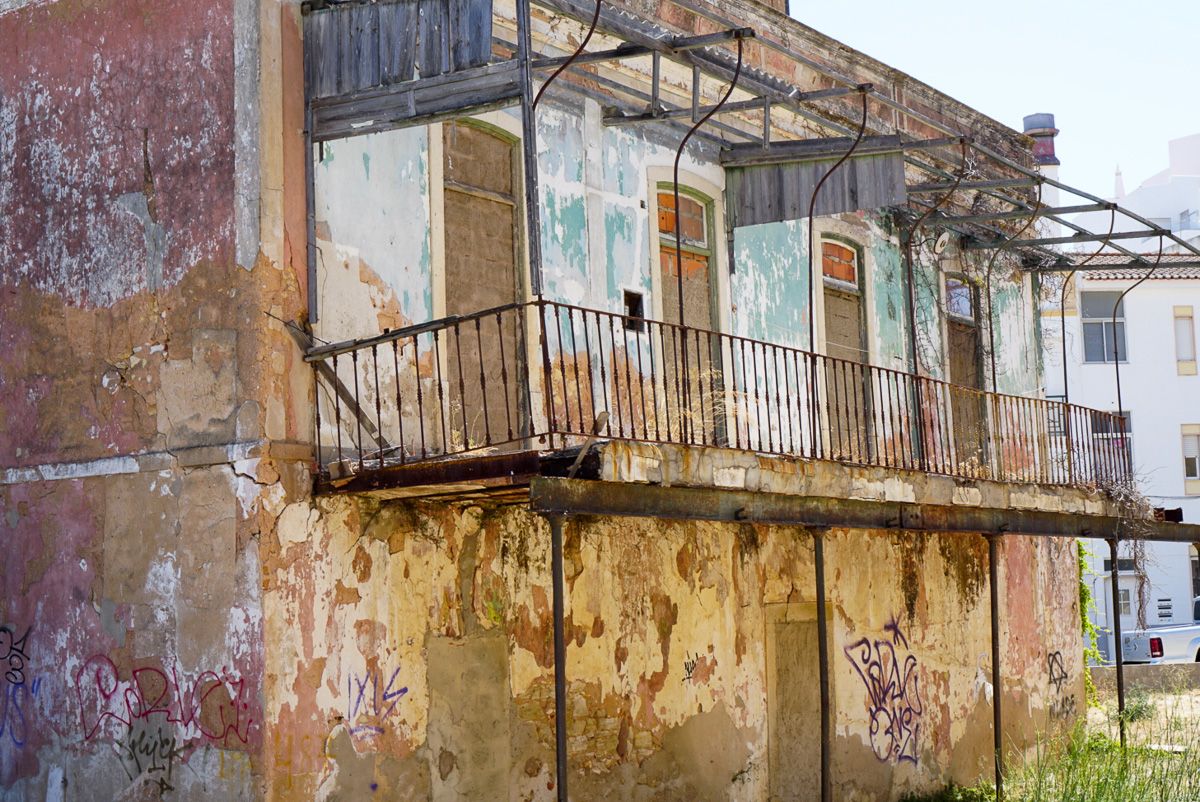

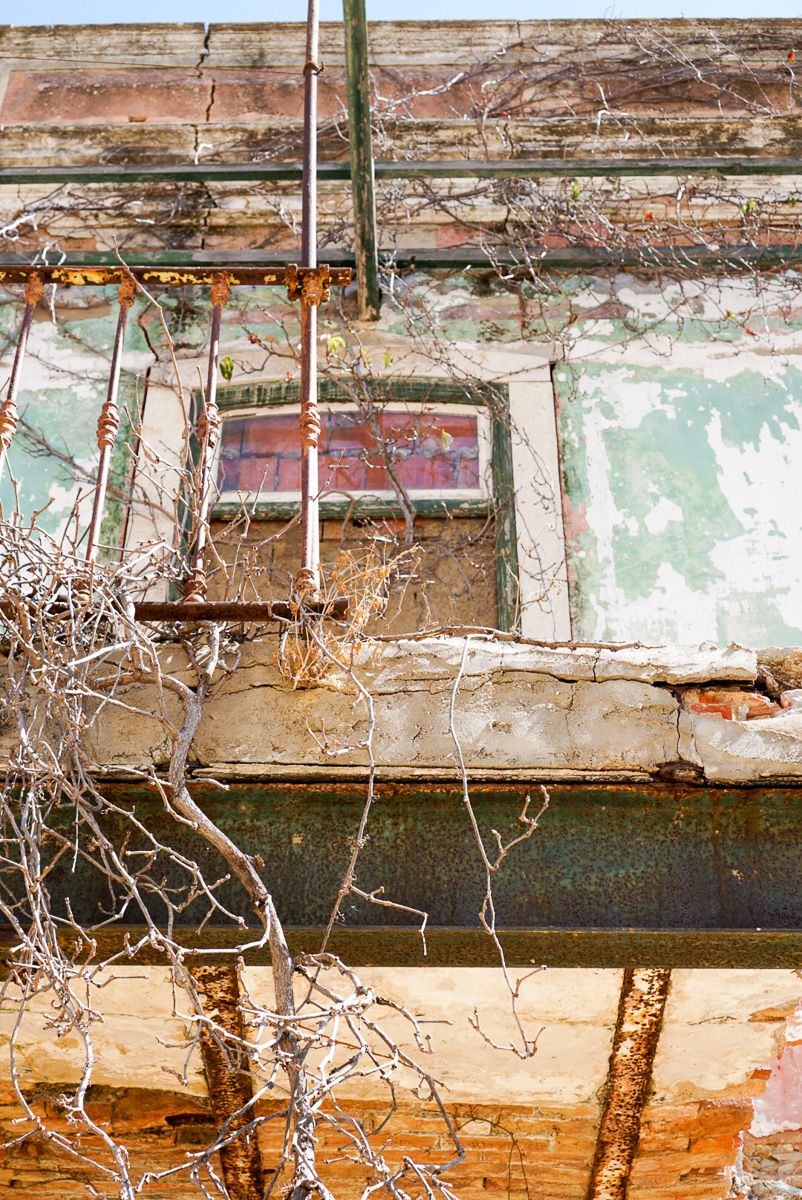
A huge abandoned building.
As we made our way there, we saw many abandoned buildings, something we saw everywhere in Portugal. If you follow my blog or IG, you KNOW that I love decrepit, rundown buildings. So, of course, I had to stop and take pictures. Doesn't everyone do that?!
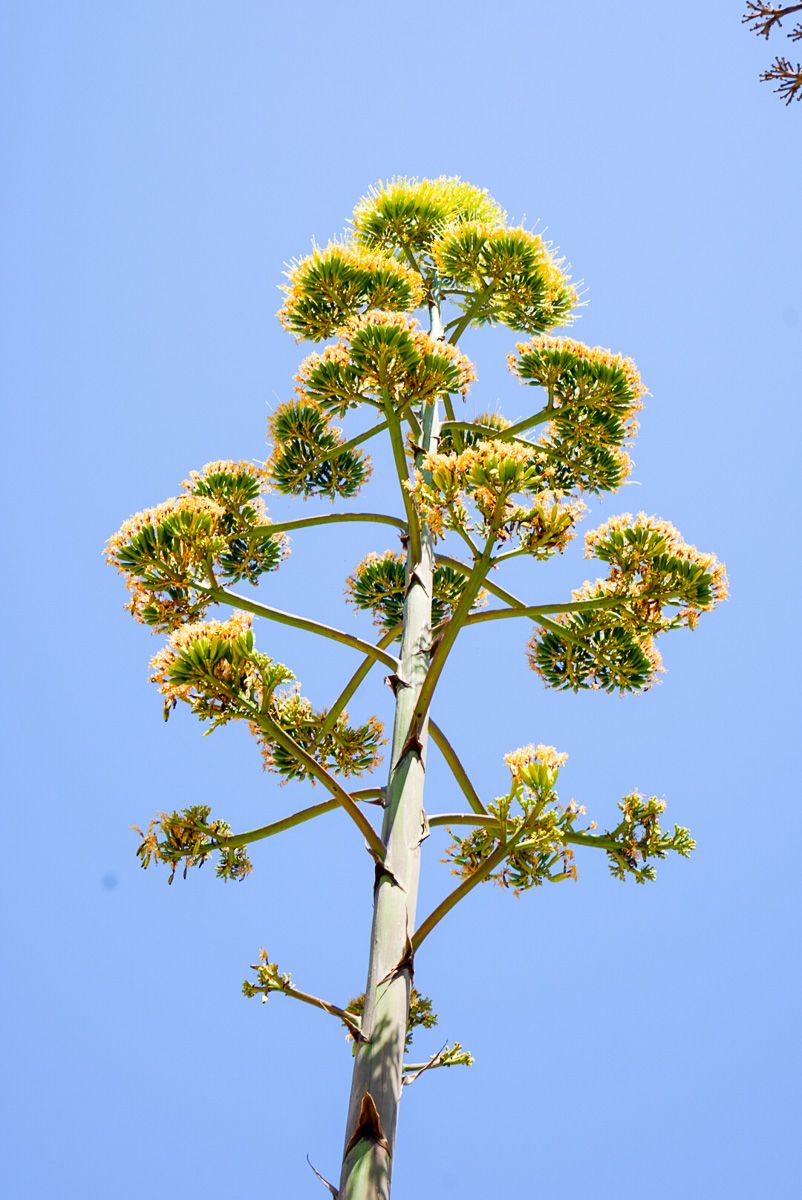
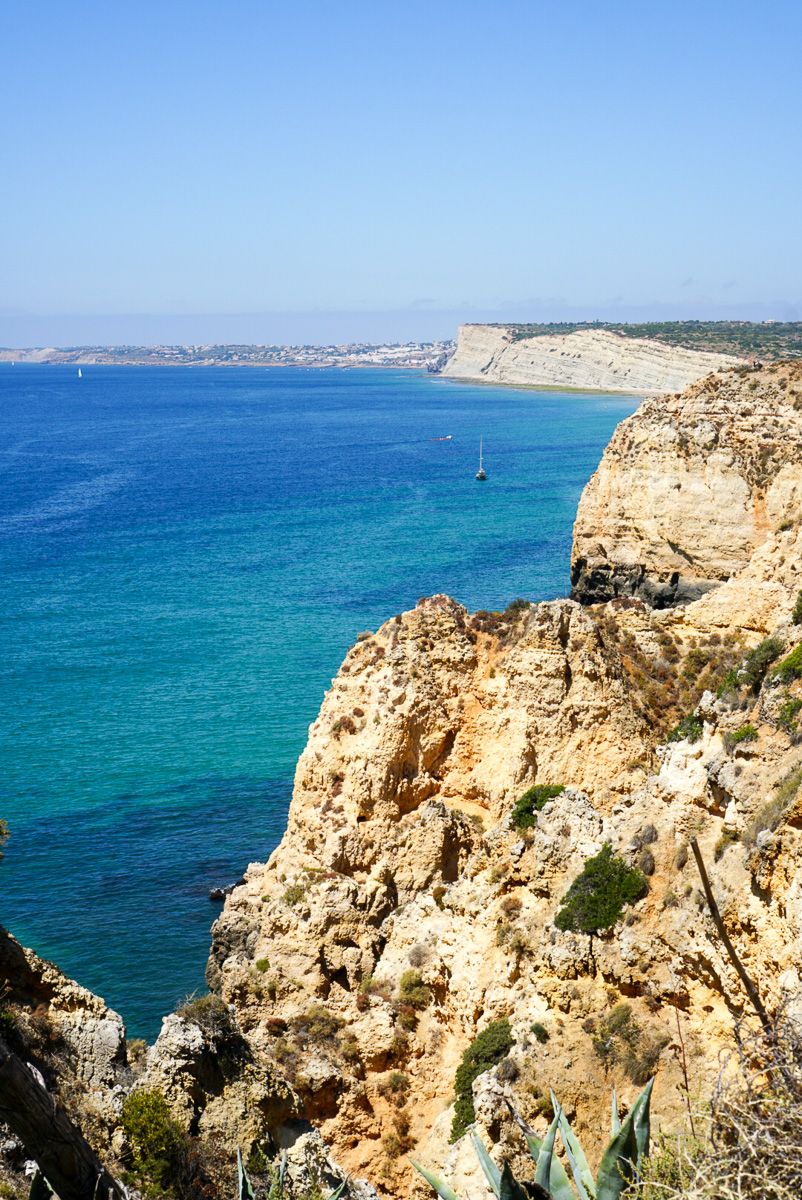
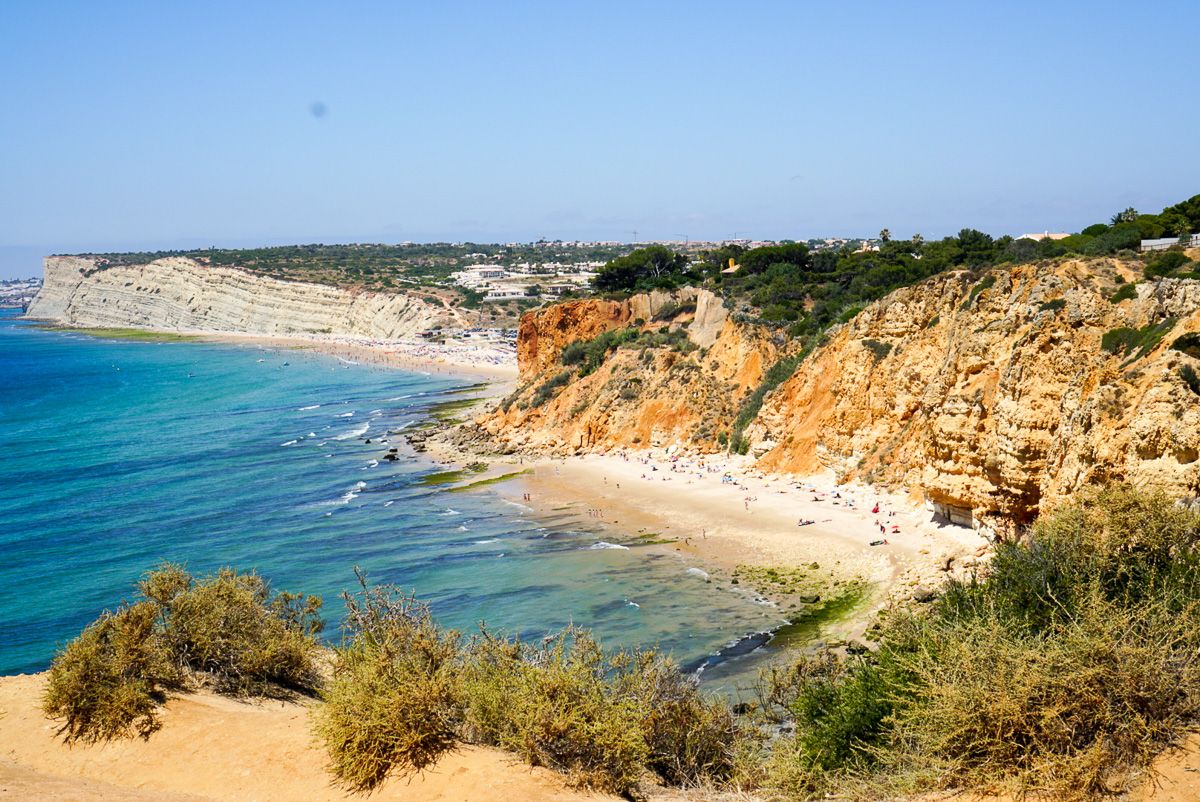
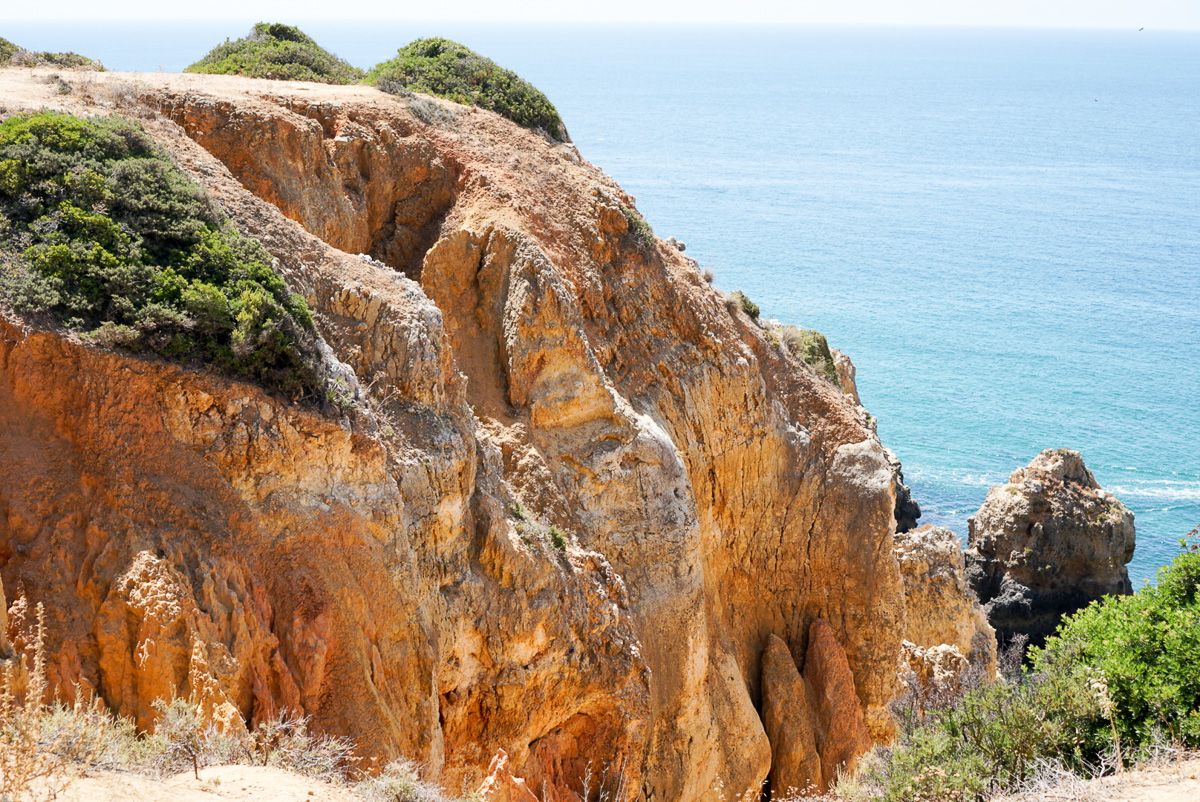
Ponta da Piedade
The Ponta da Piedade was so worth seeing, and I'm glad we took the slight detour to get there. Apparently, everyone else thought it was somewhere to see too! Tourists (travellers) like us were everywhere, and parking was very challenging.
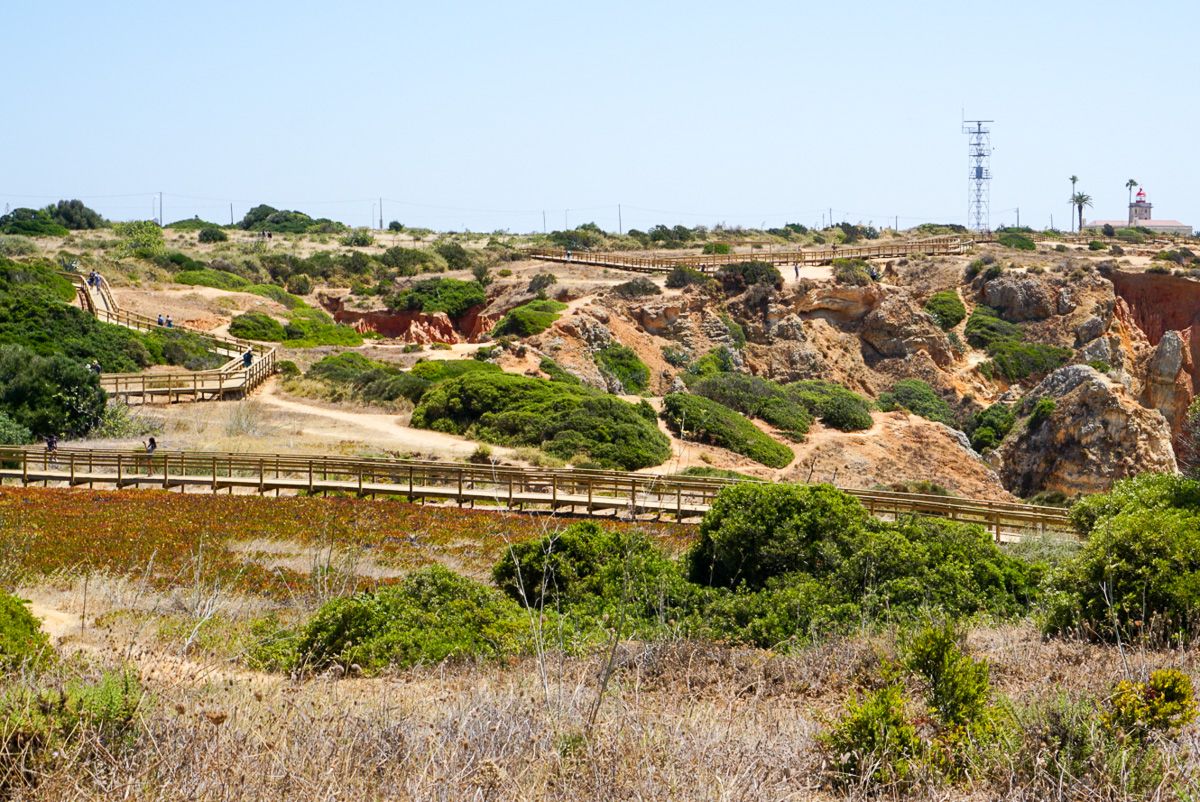

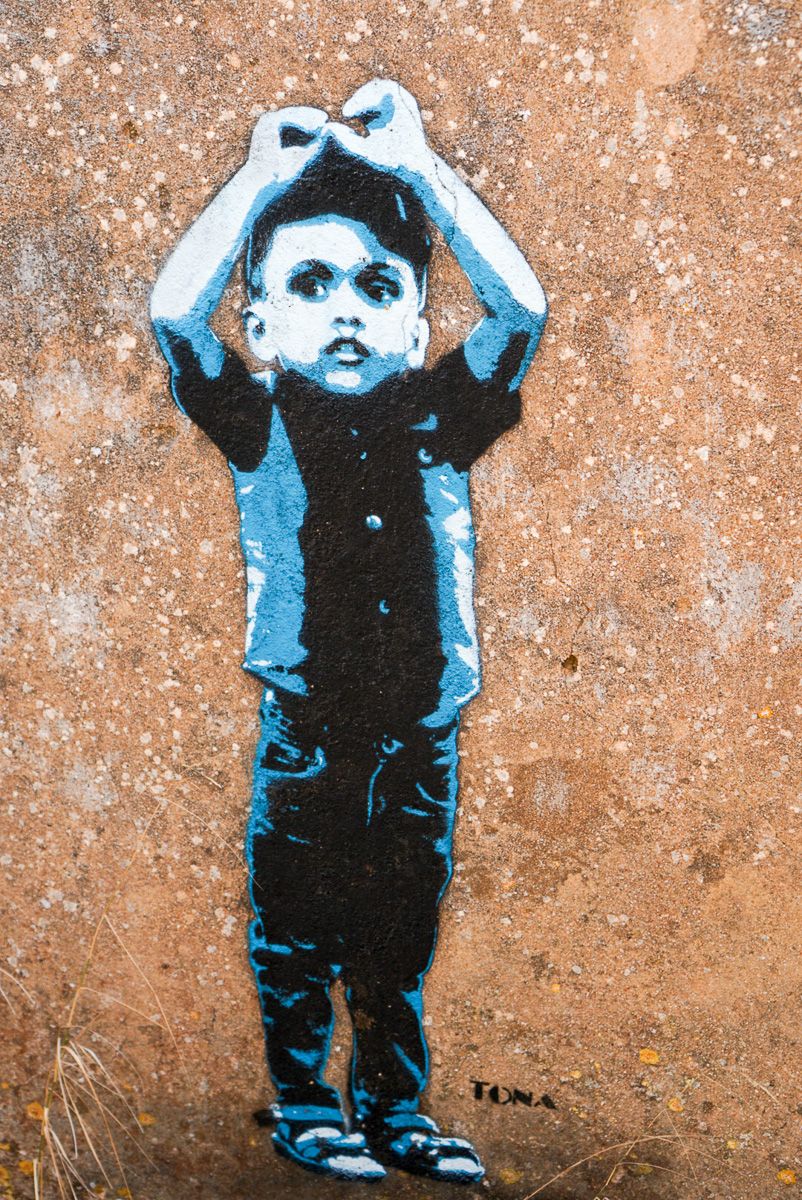

The boardwalk, street art by Tona and another abandoned building.
After finding parking, we walked the footpaths and the scenic boardwalk along the cliffs. The views were spectacular! We even found street art by an artist that we had seen in Lisbon hidden in an old rundown building near the path. I'm not sure if it was well known as it was off the track.
We wished that we had the time to take a boat tour or see the sunset, but it was time to get back on the road. Évora was still around 300 kilometres away.

We still took the long way there; we loved taking all the back roads in our little Fiat - we really should give it a name -maybe, OLF?
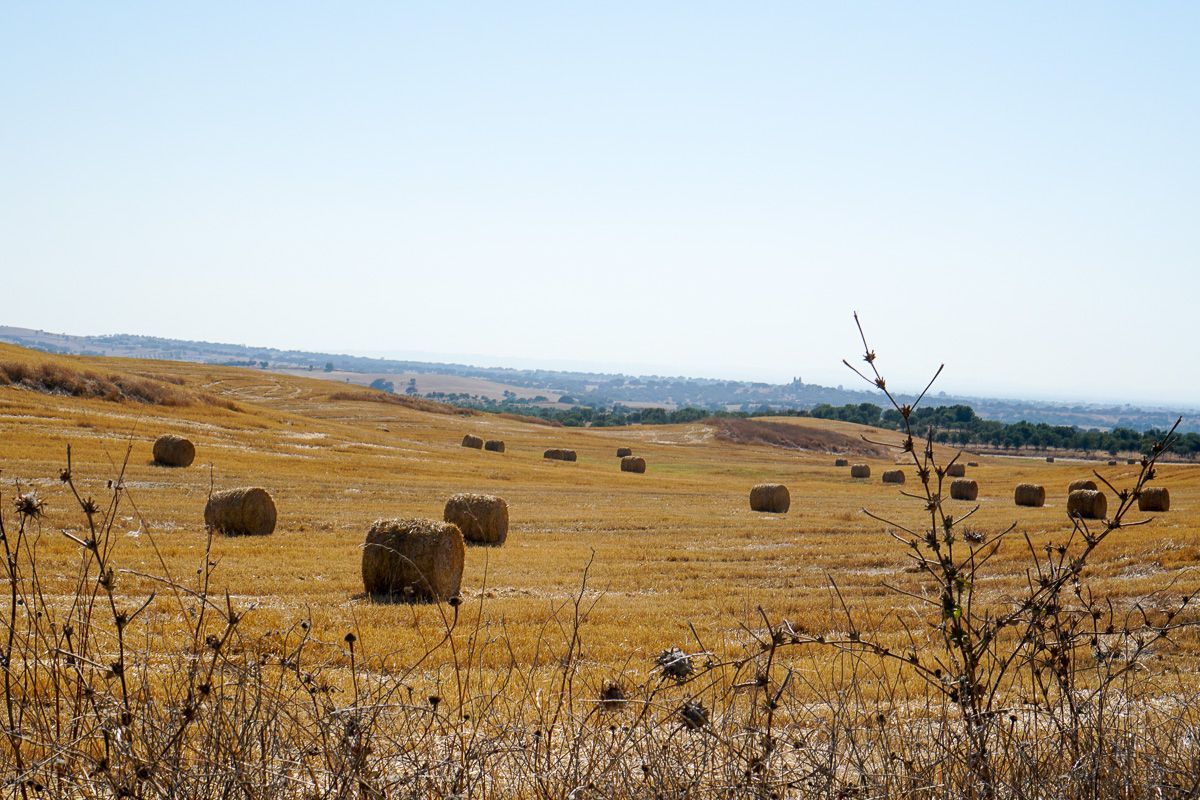

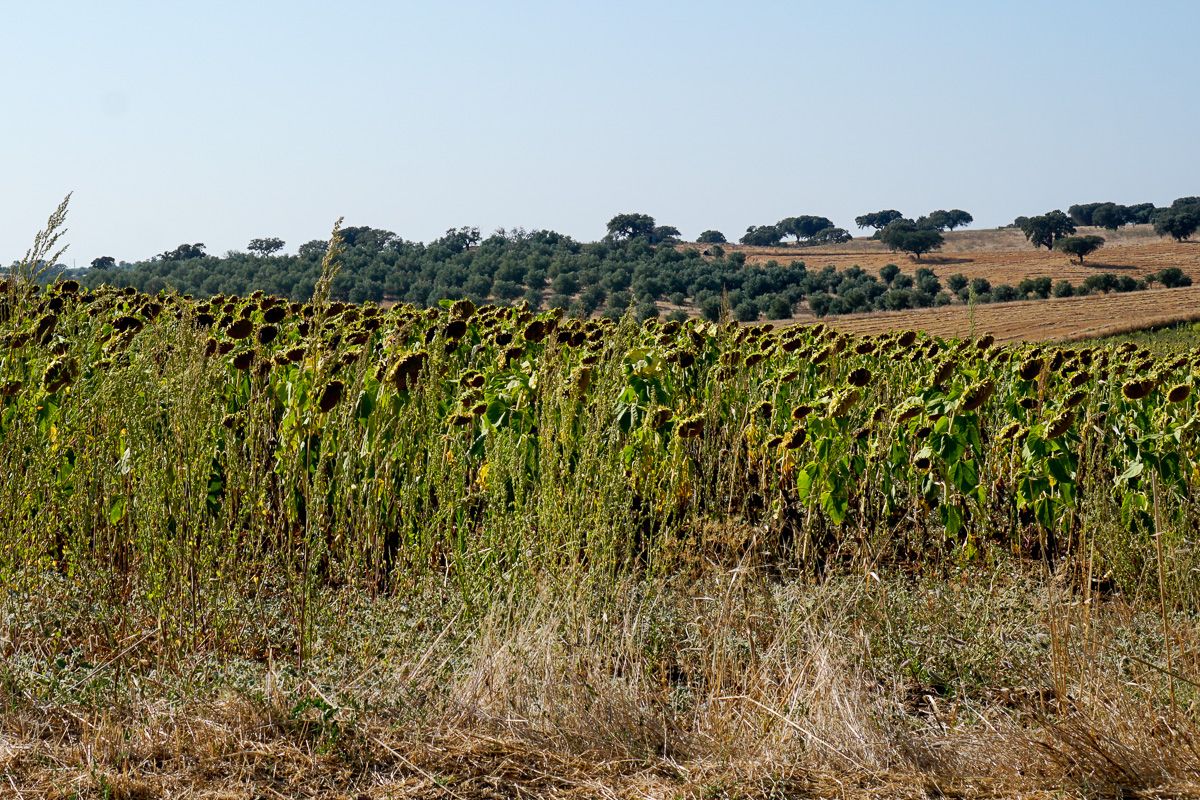



We saw various crops along the way- cork, oranges, hay, vineyards and many dead sunflower fields. We were amazed to see so many dead sunflowers waiting for seed harvesting! I was very disappointed not to see them in full bloom. Next time!
And, as always, we saw more street art.
ViaMichelin decided that we had to take another slight detour and go to the Castle of Aljezur.


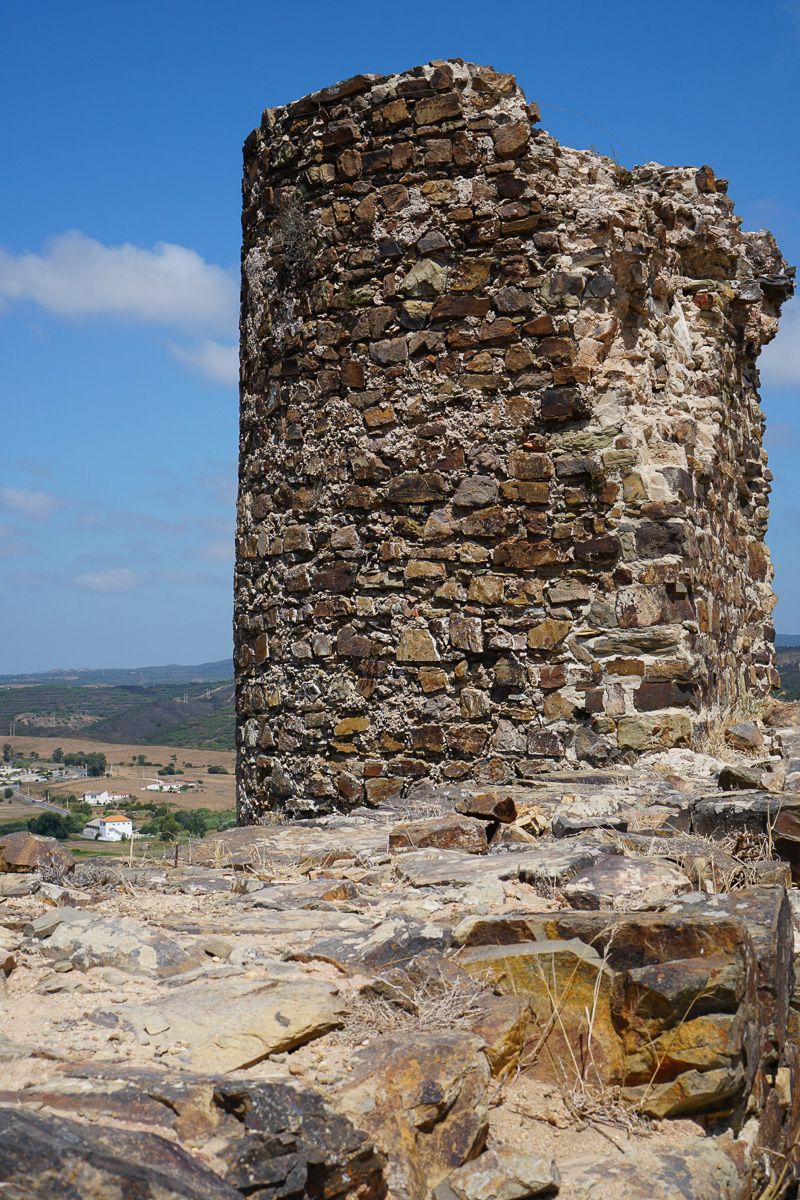

Castle of Aljezur, Aljezur and the river.
According to Wiki, the "Castle of Aljezur is a medieval castle founded in the parish of Aljezur,...overlooking the Aljezur River. Excavations in the castle have discovered that the location was occupied during the Bronze and Iron Ages. At the same time, the parade grounds, habitational structures, and two silos date to the 12th and 13th centuries." We wandered about the structure, taking it all in, but it was getting a bit late in the afternoon, and Évora was still 200+ kilometres or 3 hours away. Time to get a move on to our Airbnb.
We arrived at our lovely Airbnb in Évora. We would love to give you information to rent it; however, it appears it is no longer on Airbnb.
We spent the next two days in Évora, visiting historical sites and many (many!) churches.


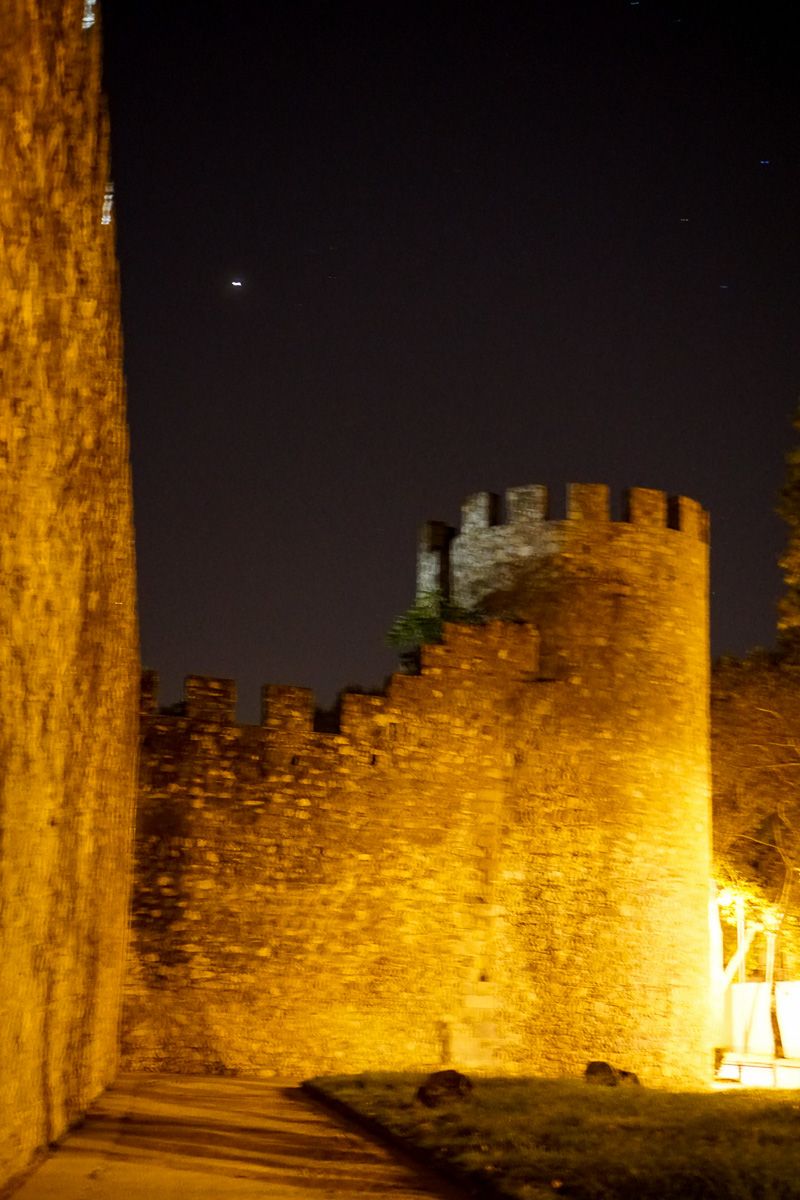

Map of the Wall around the Évora and the Wall.
Évora was conquested by the Romans in 57 BC, who built the Wall around the city. There are many examples of the walls still standing. Over centuries Évora was captured by the Moors, the Portuguese and the French. All have left their impact on the city.
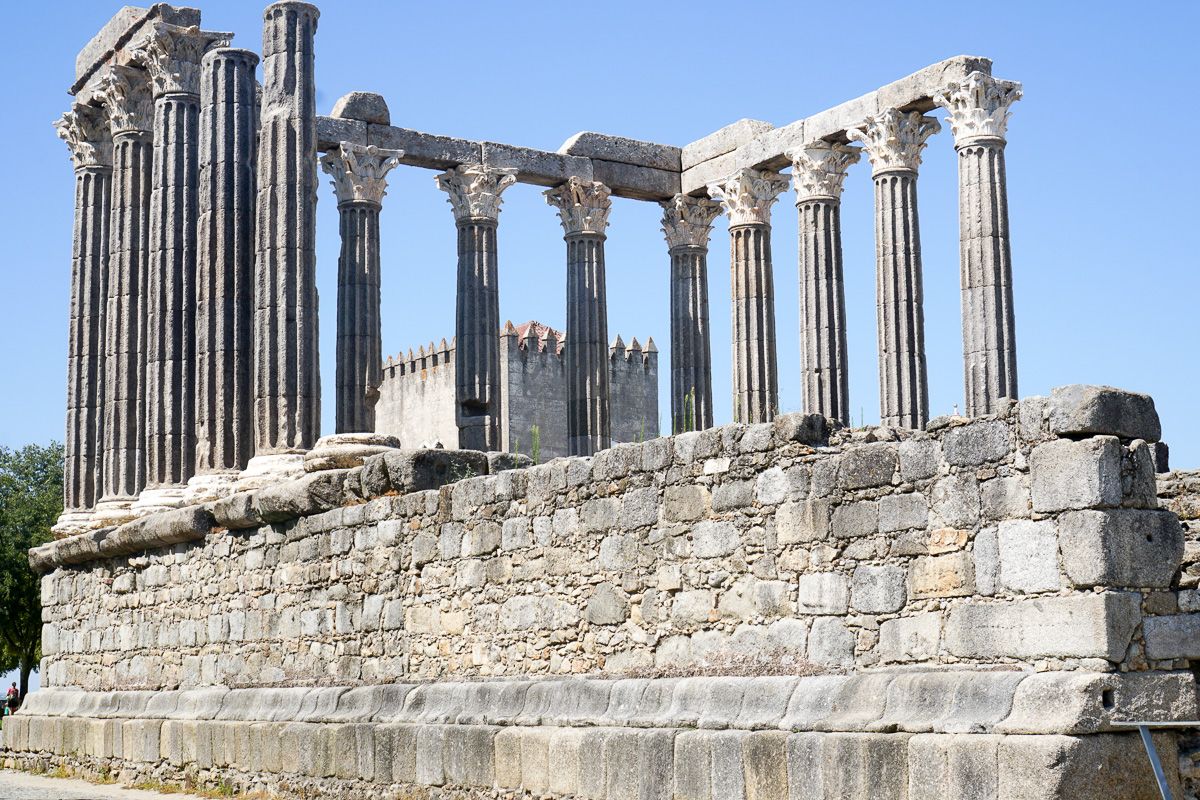
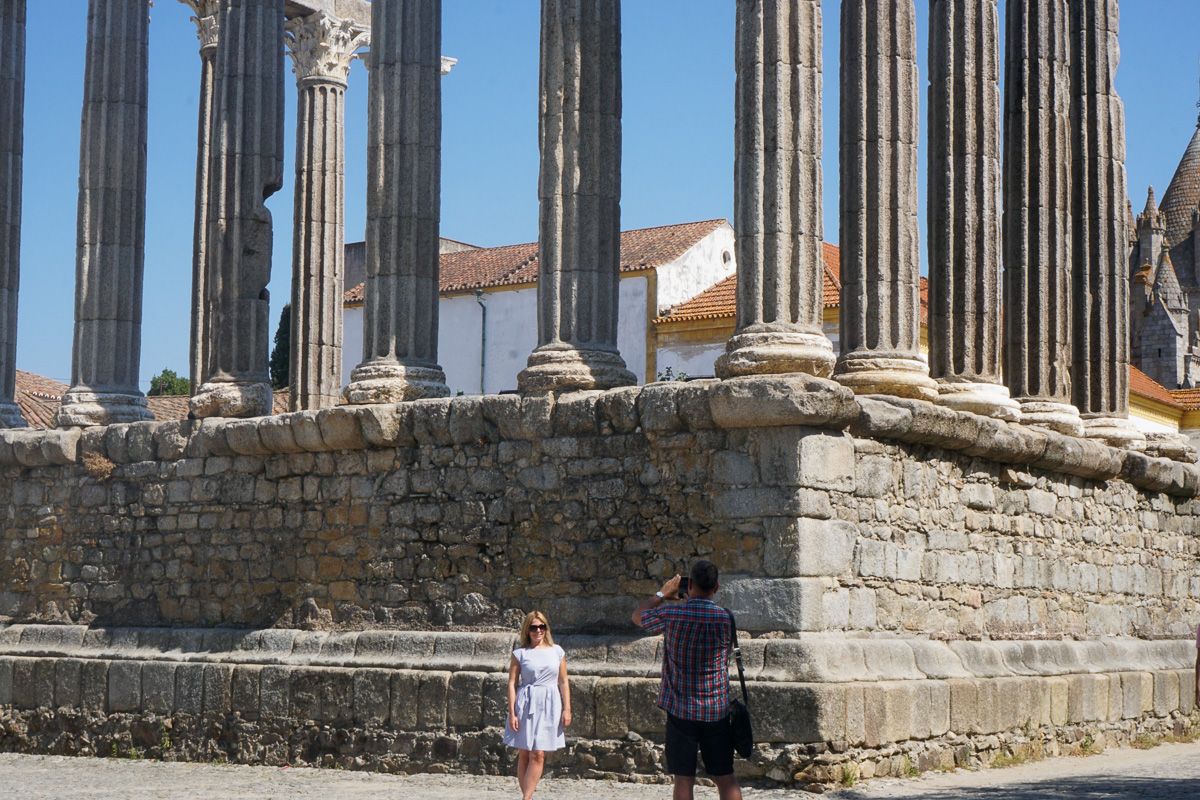
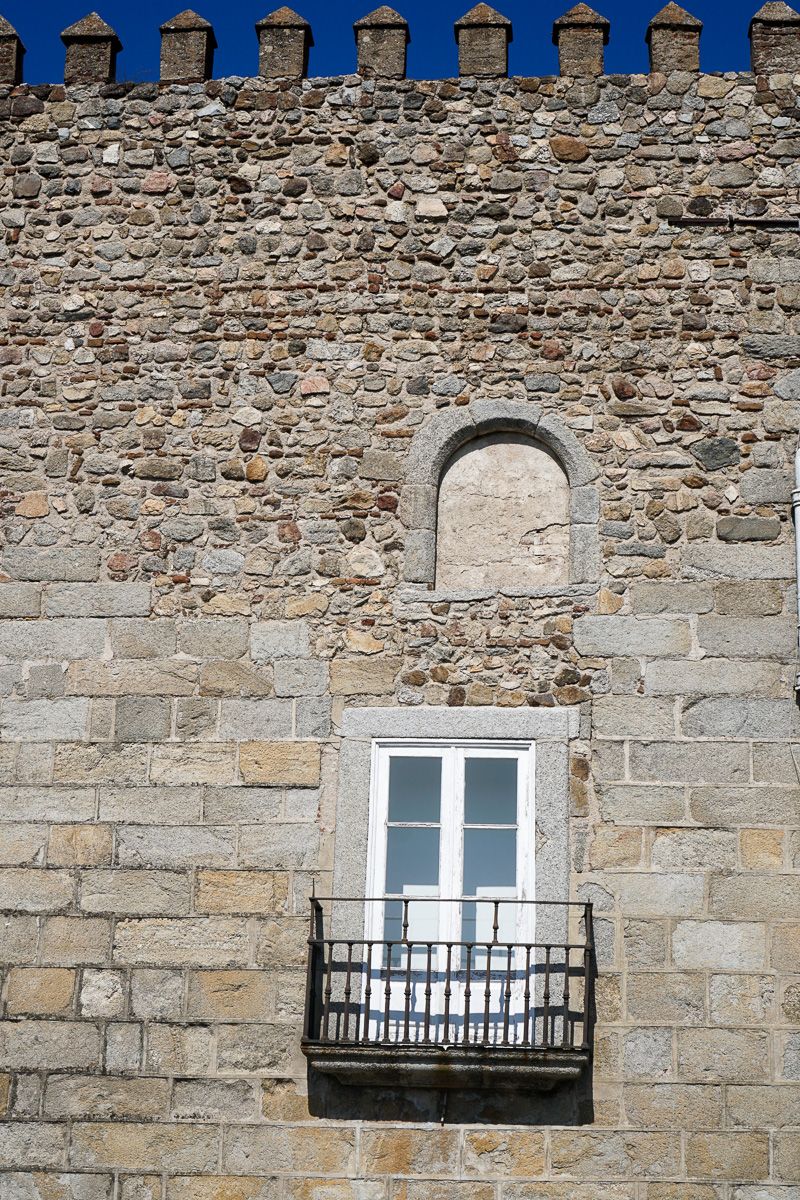
We visited the Roman Temple of Évora - Templo Romano - popularly referred to, incorrectly, as the Temple of Diana. There is nothing to support that the 1st-century (in some references 2nd or 3rd century) temple was dedicated to Diana and more likely was part of the cult of Emperor Augustus. Over time, the structure was incorporated into a medieval building and, thus, ultimately, survived destruction.
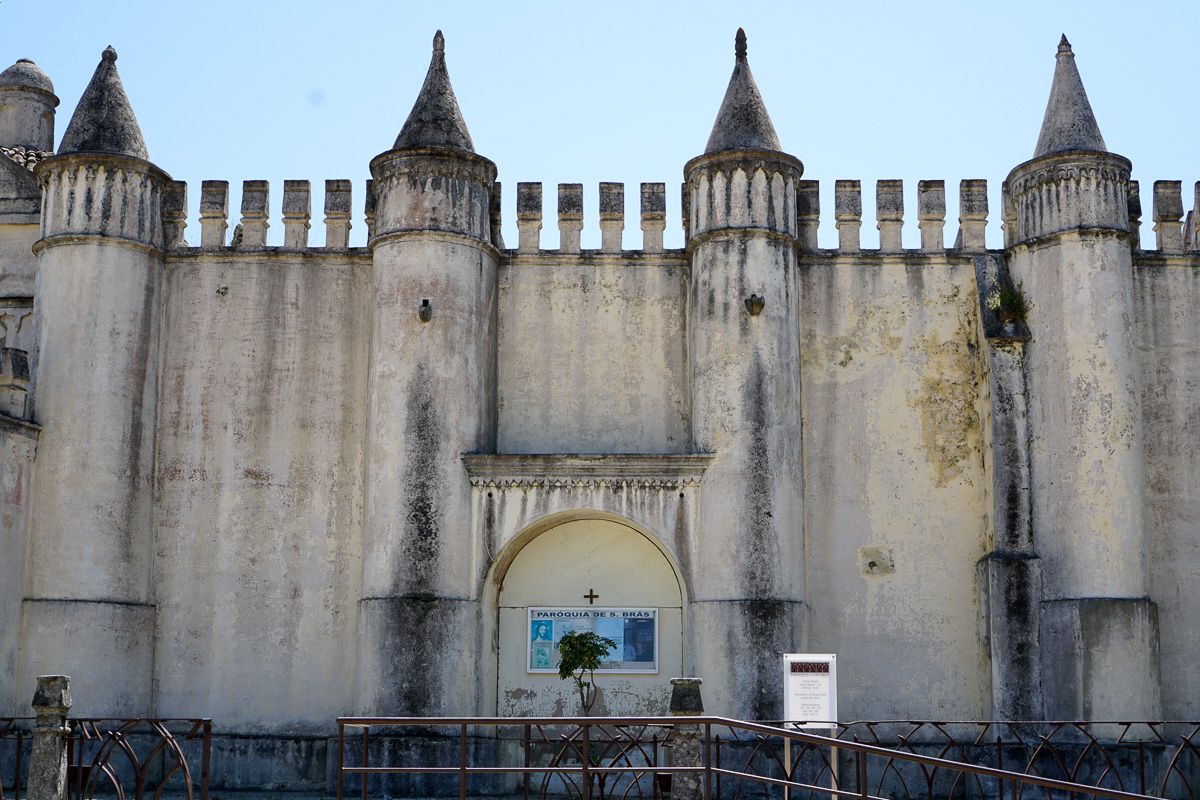

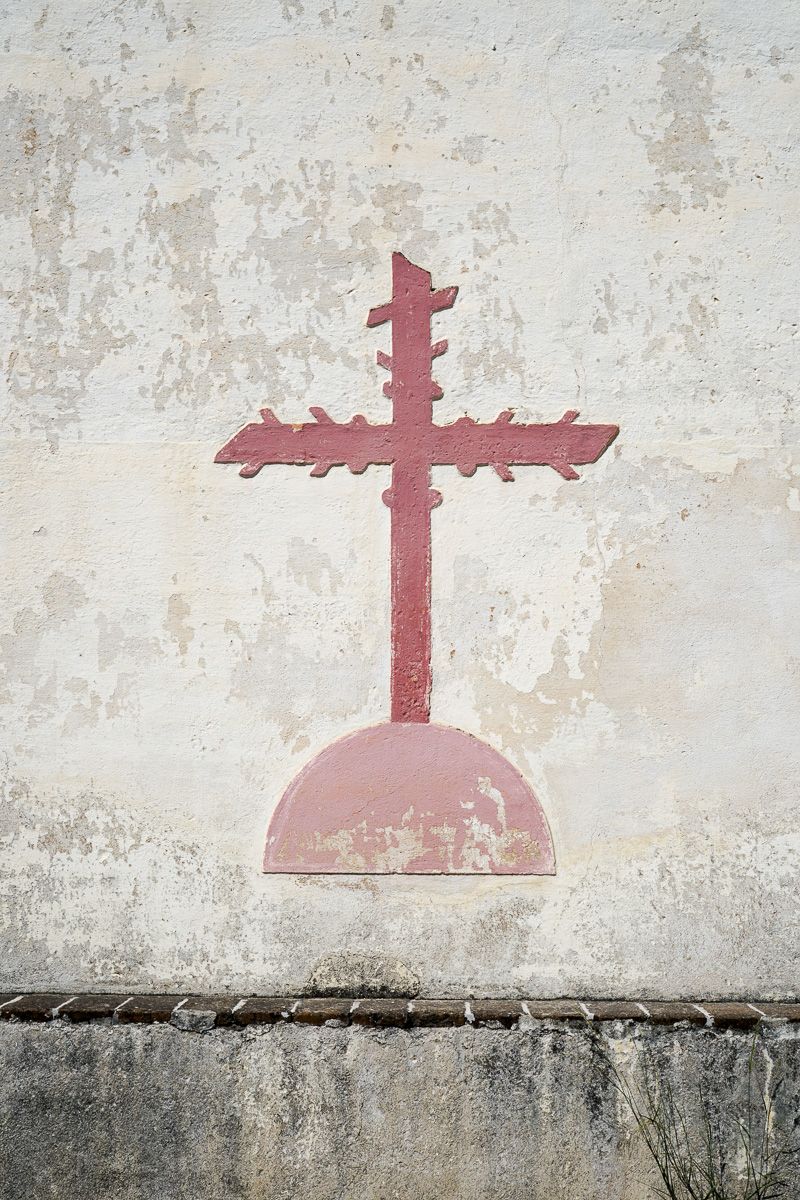


Ermida de São Brás
Then on to the many (many!) Churches. Each of the churches was breathtaking - for different reasons.
The Ermida de São Brás was outside the old city walls at the top of the street our Airbnb was on. The central part of the building wasn't open while we were there, although we peeked into the side door one day when the caretakers were vacuuming.
To be honest, the Churches kind of blended together after a while. It was difficult to remember what you had seen in each when you saw so many in a short space of time. I took so-o-o-o-o many pictures, and thank goodness for that.
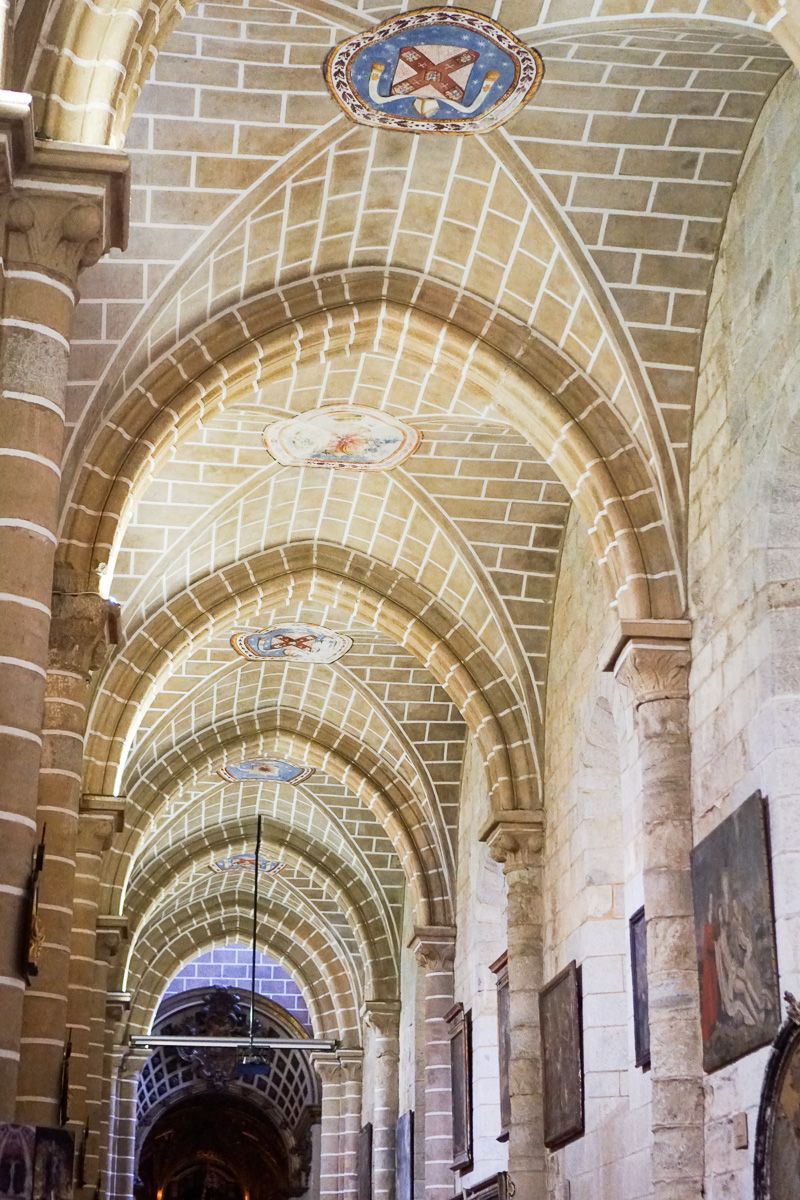
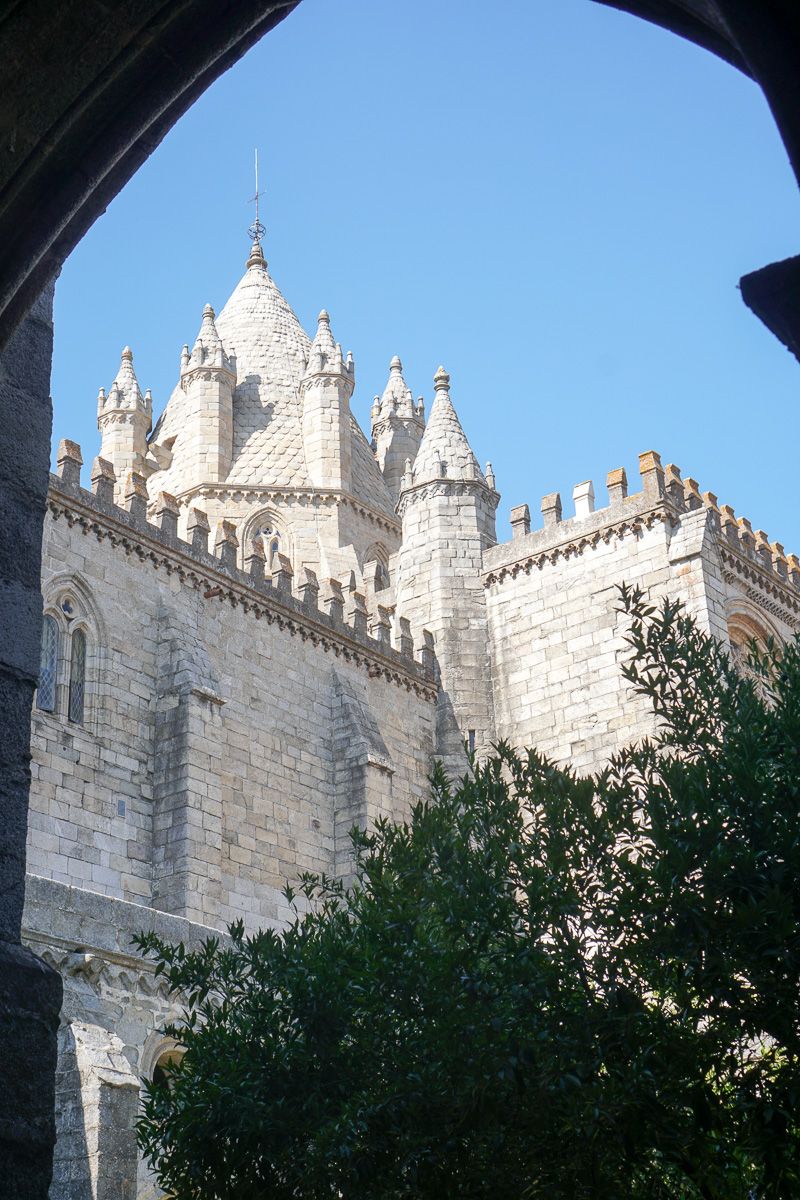
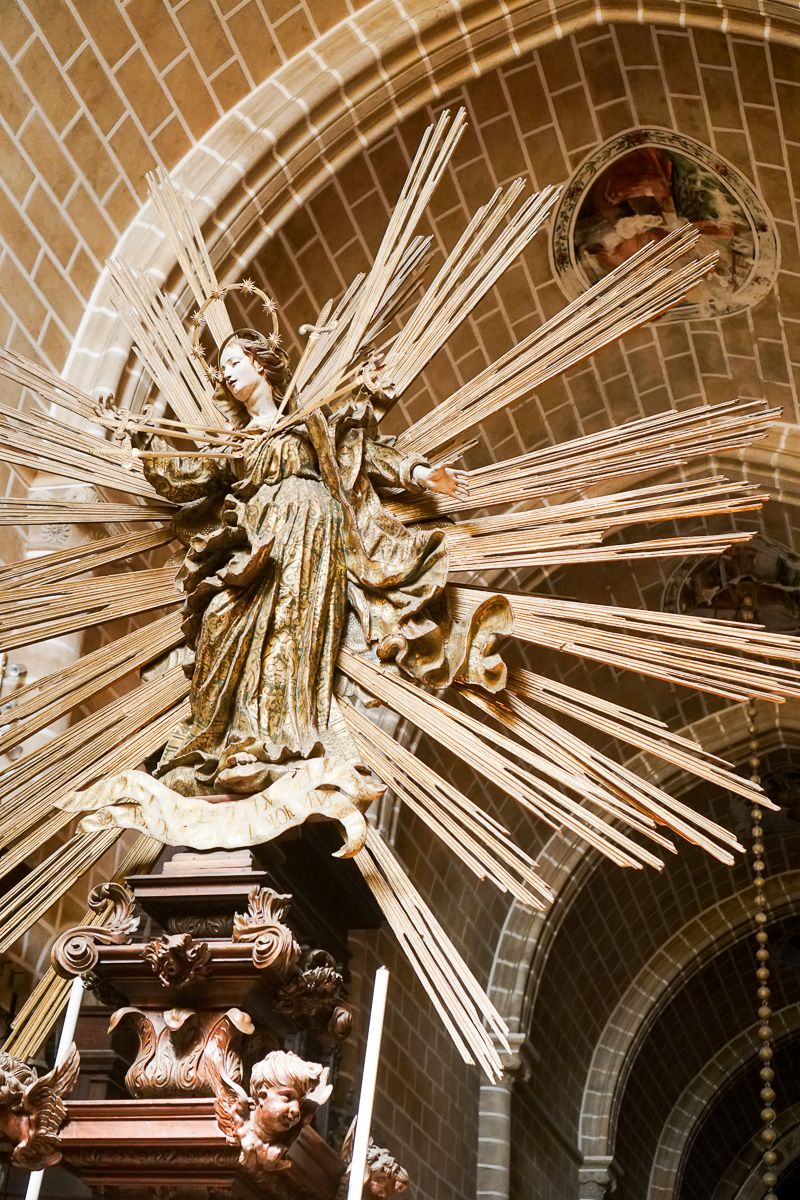
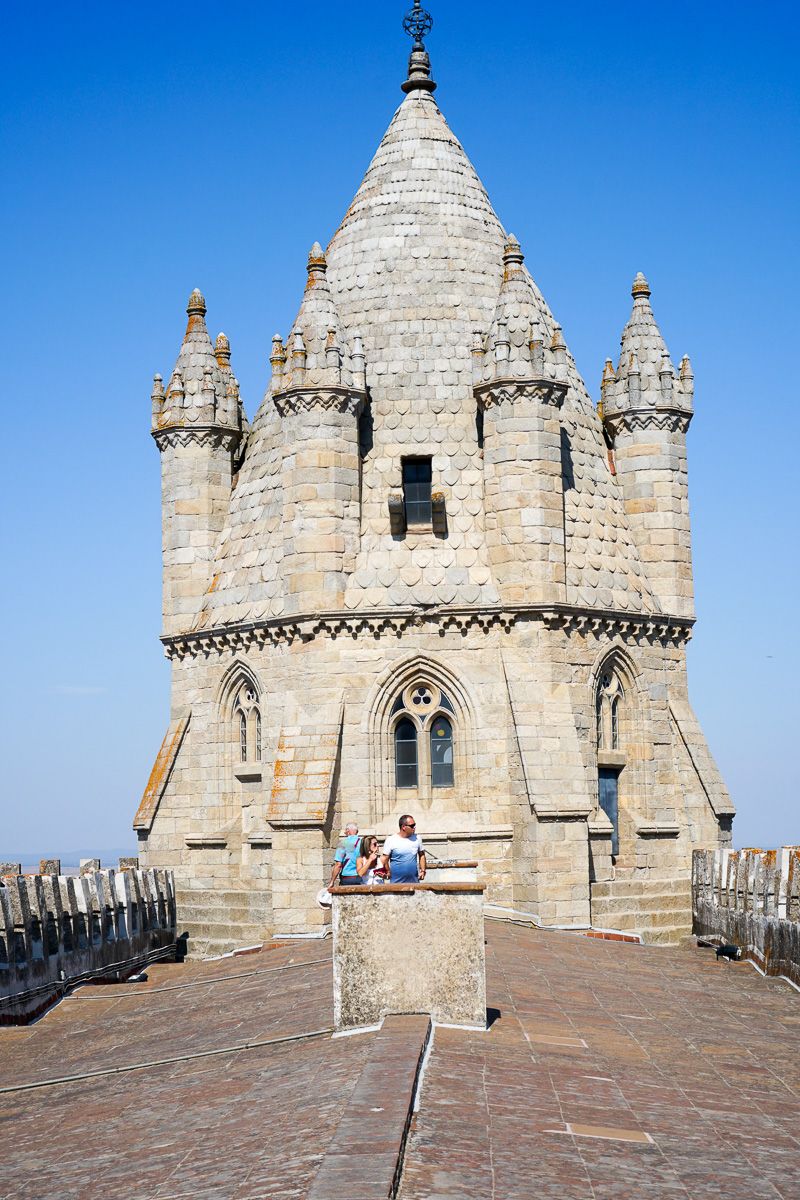


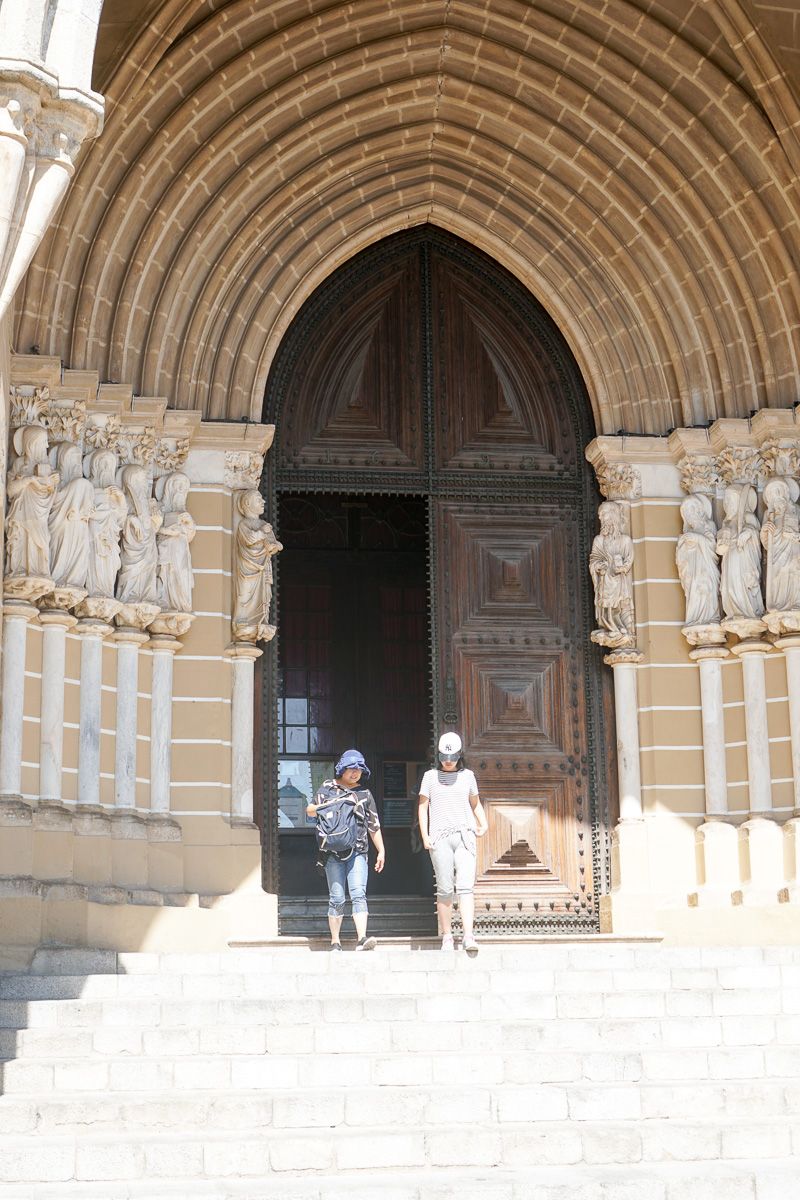
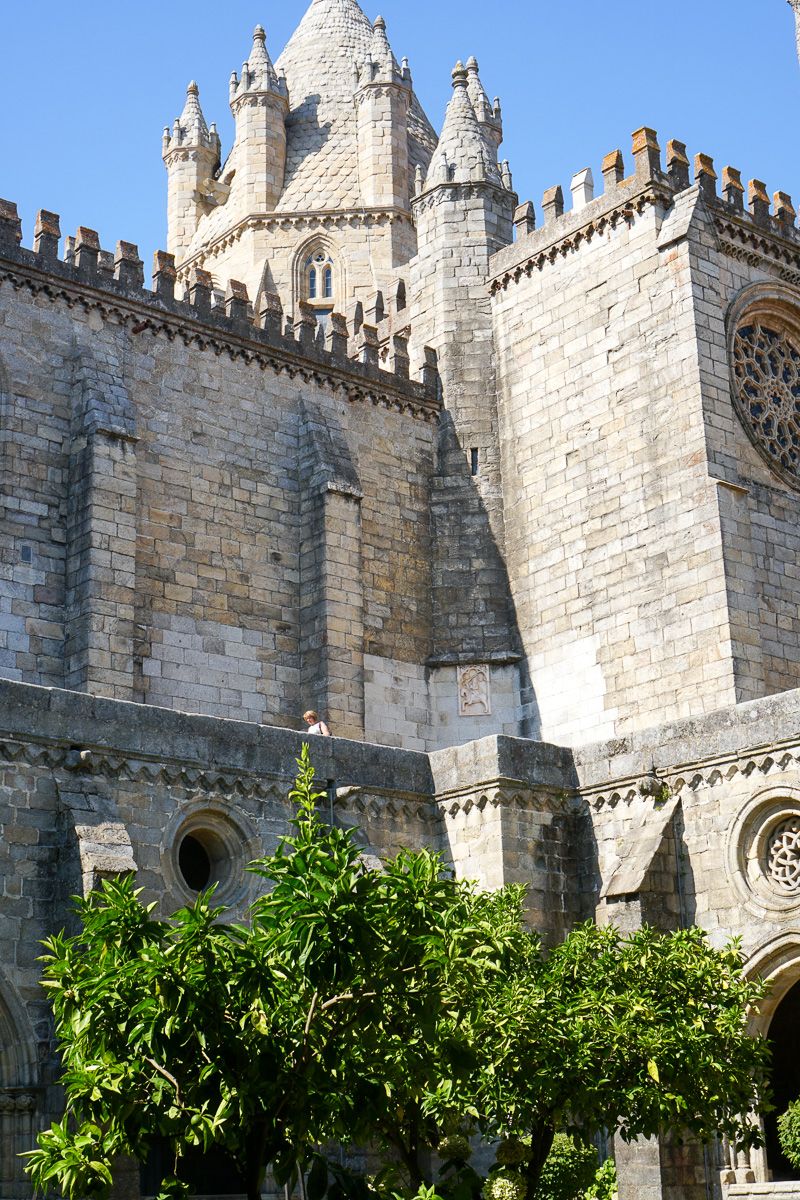
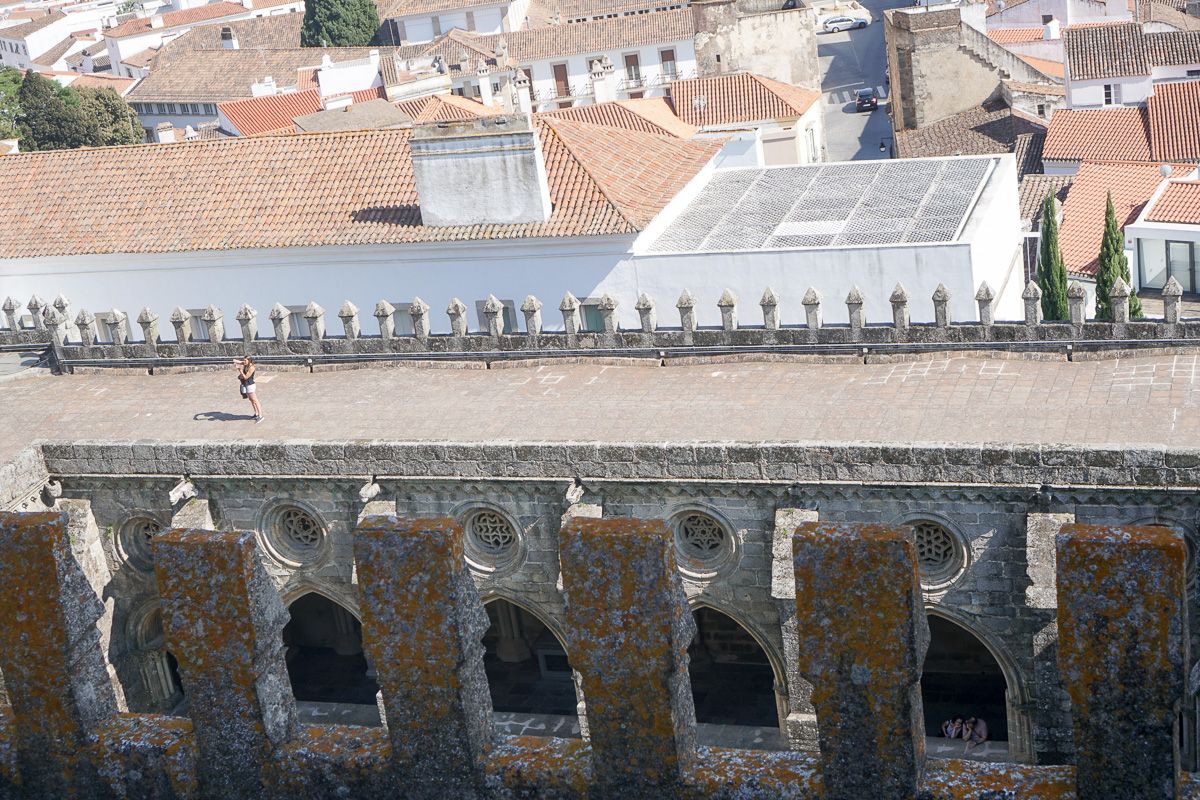
Cathedral of Évora
We started with the Cathedral of Évora. It is a Roman-Gothic Church from the 12th century. The structure was massive, taking up a city block, including interior grounds and multiple areas. We were even allowed to go up on the roof, which gave us a fantastic view of Évora.
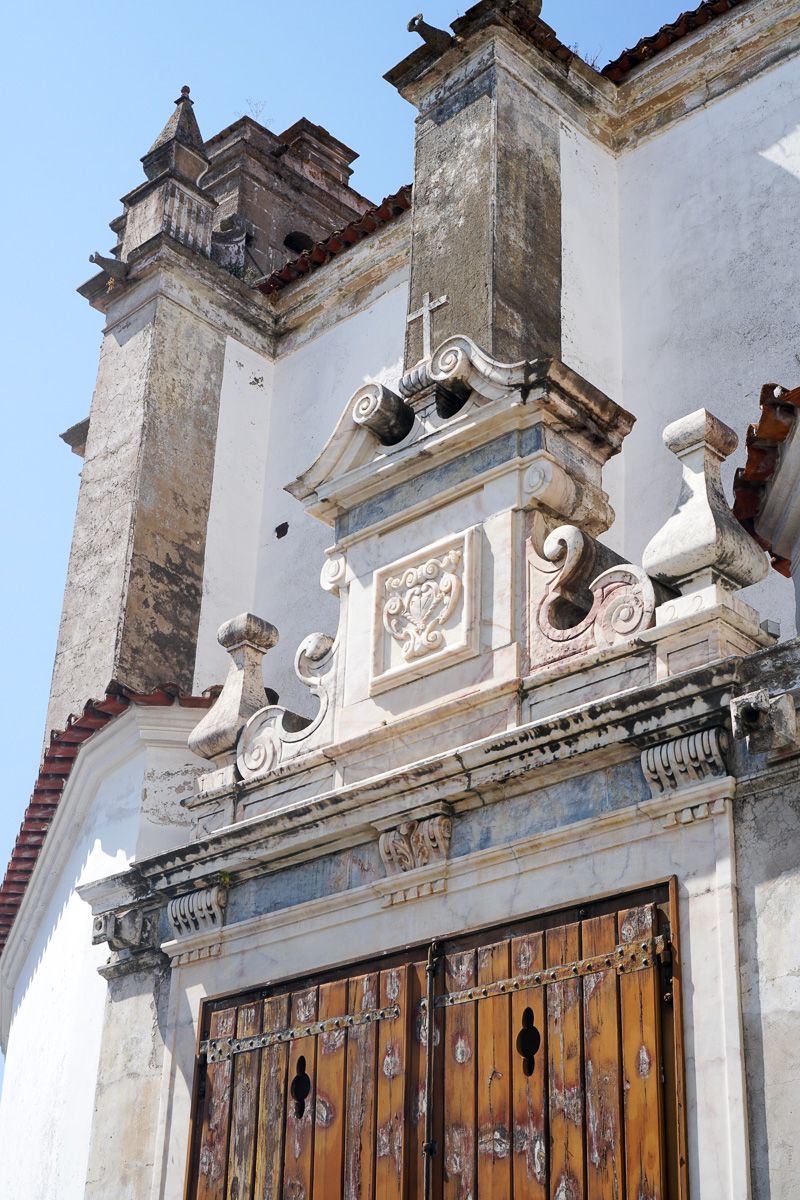
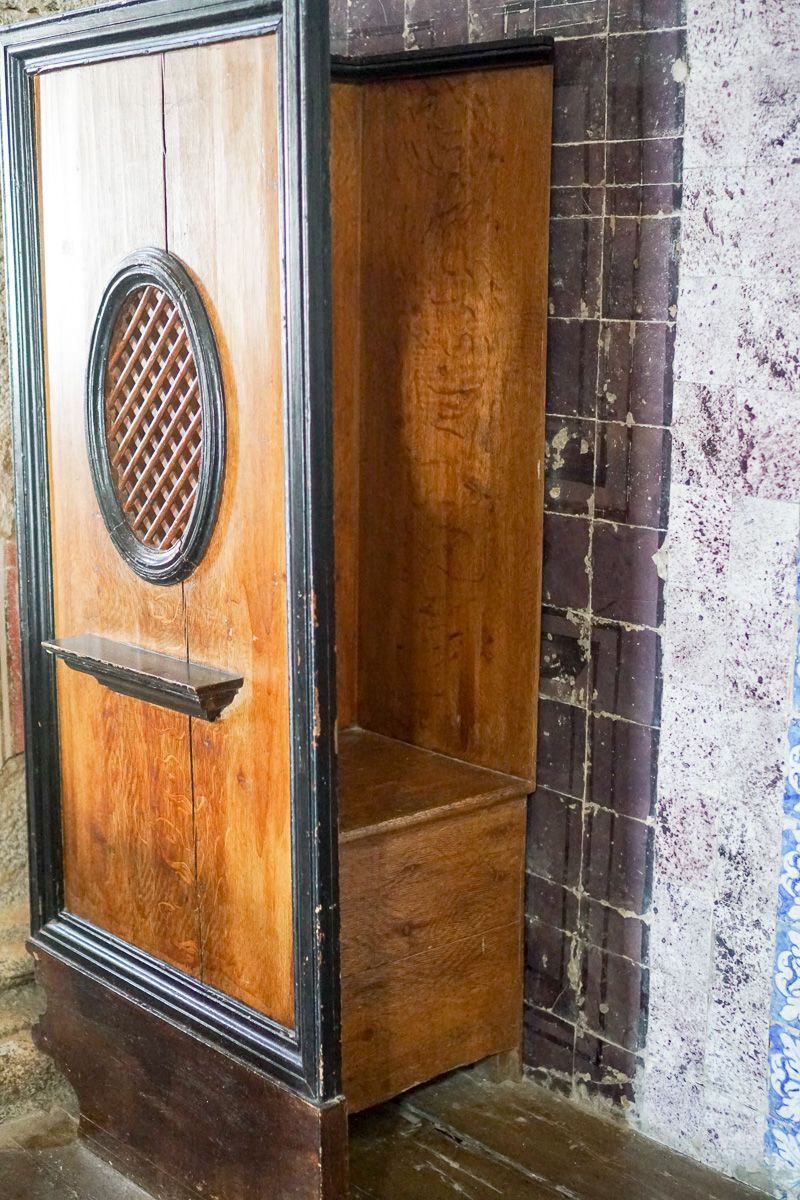
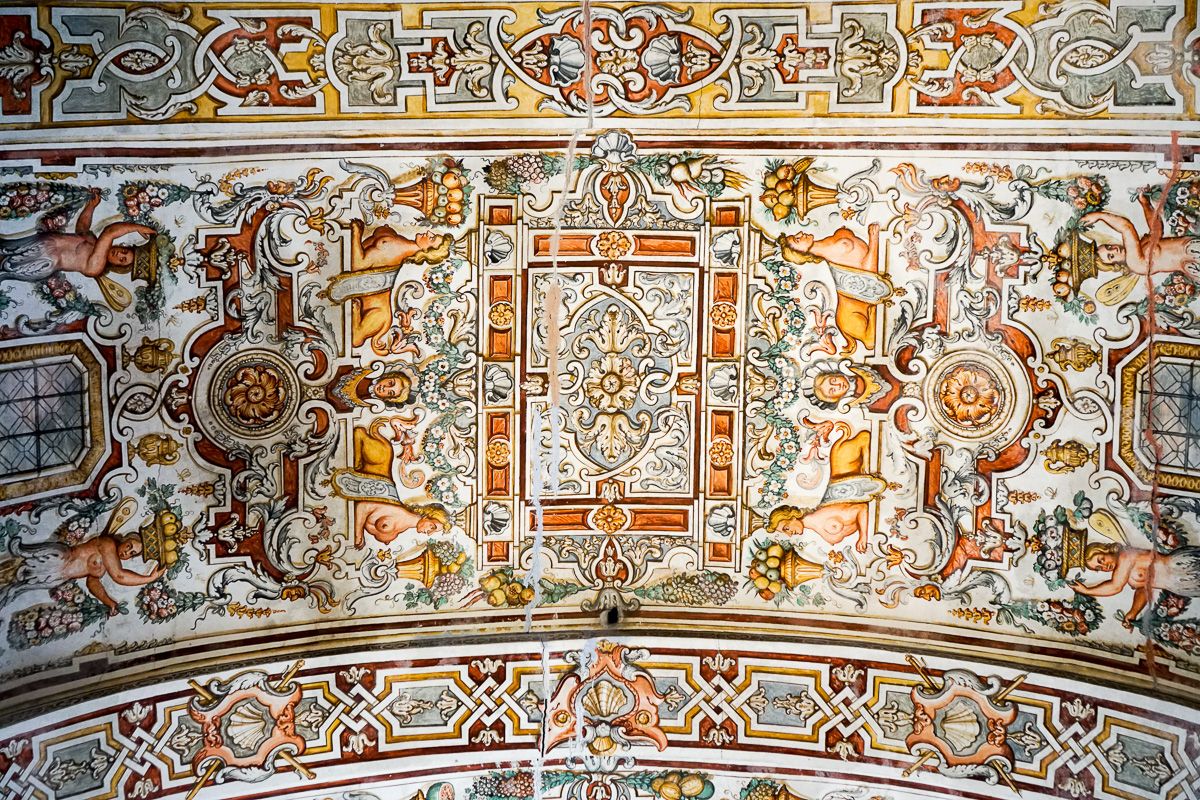
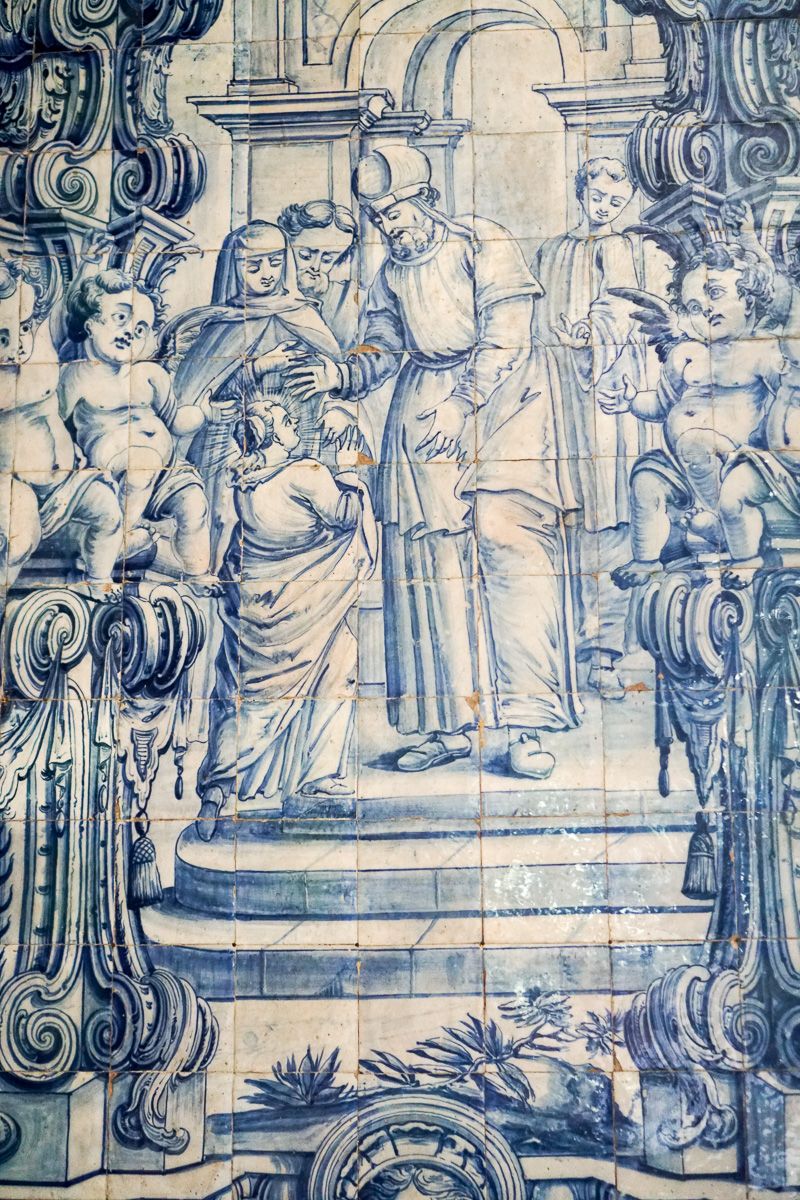
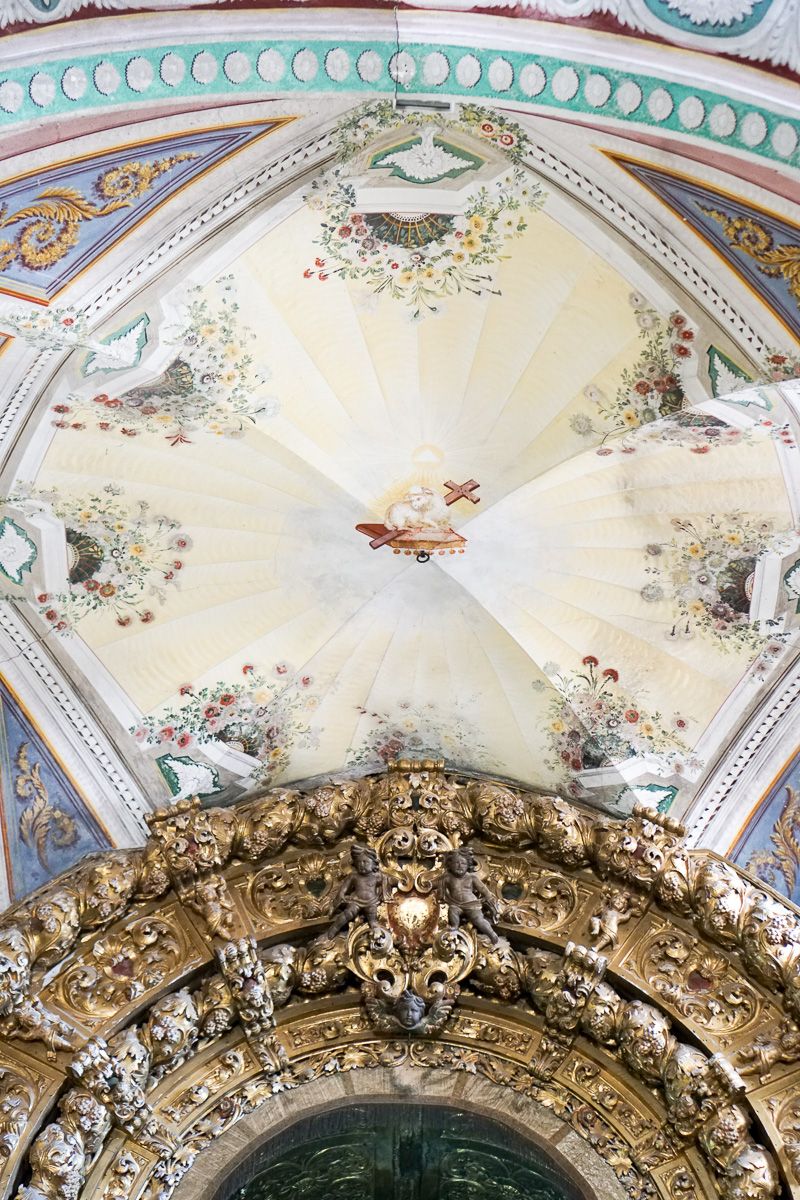
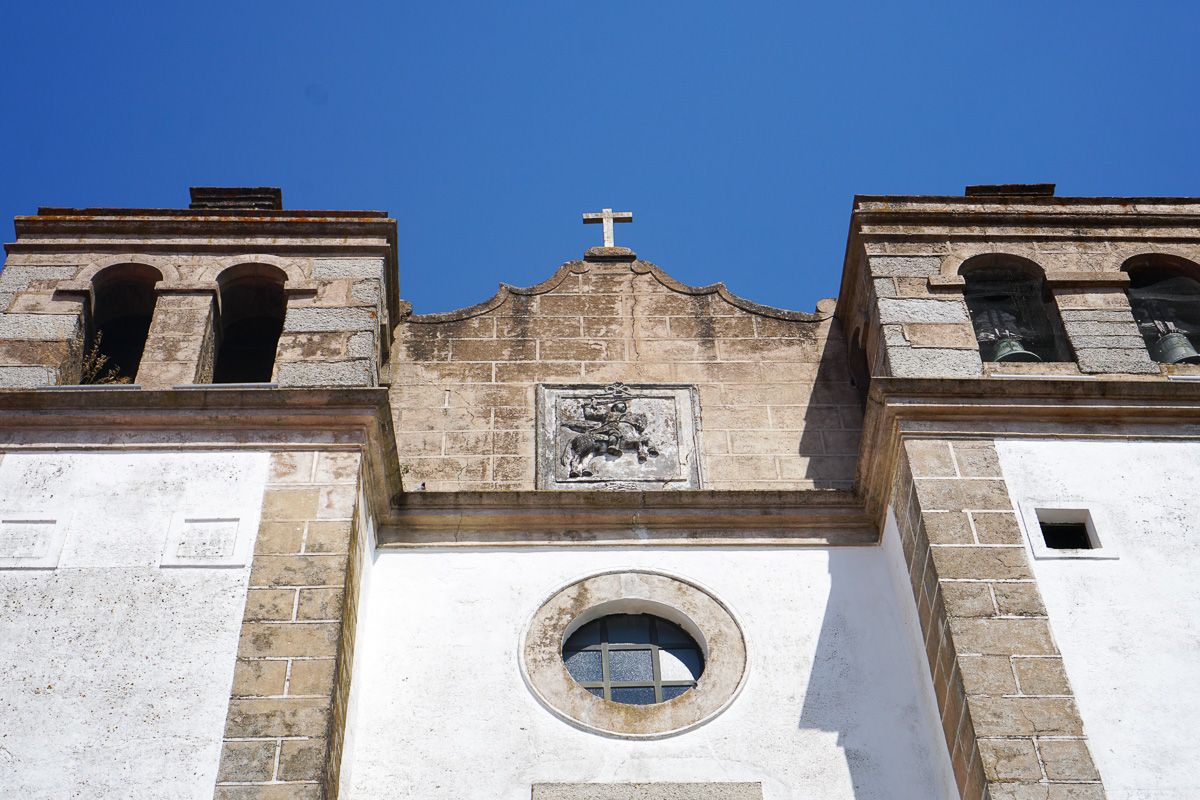
Igreja de São Tiago/ St. James Church
Next up was Igreja de São Tiago/St. James Church, originally built in 1302. Of all the churches we saw, this was the most modest.
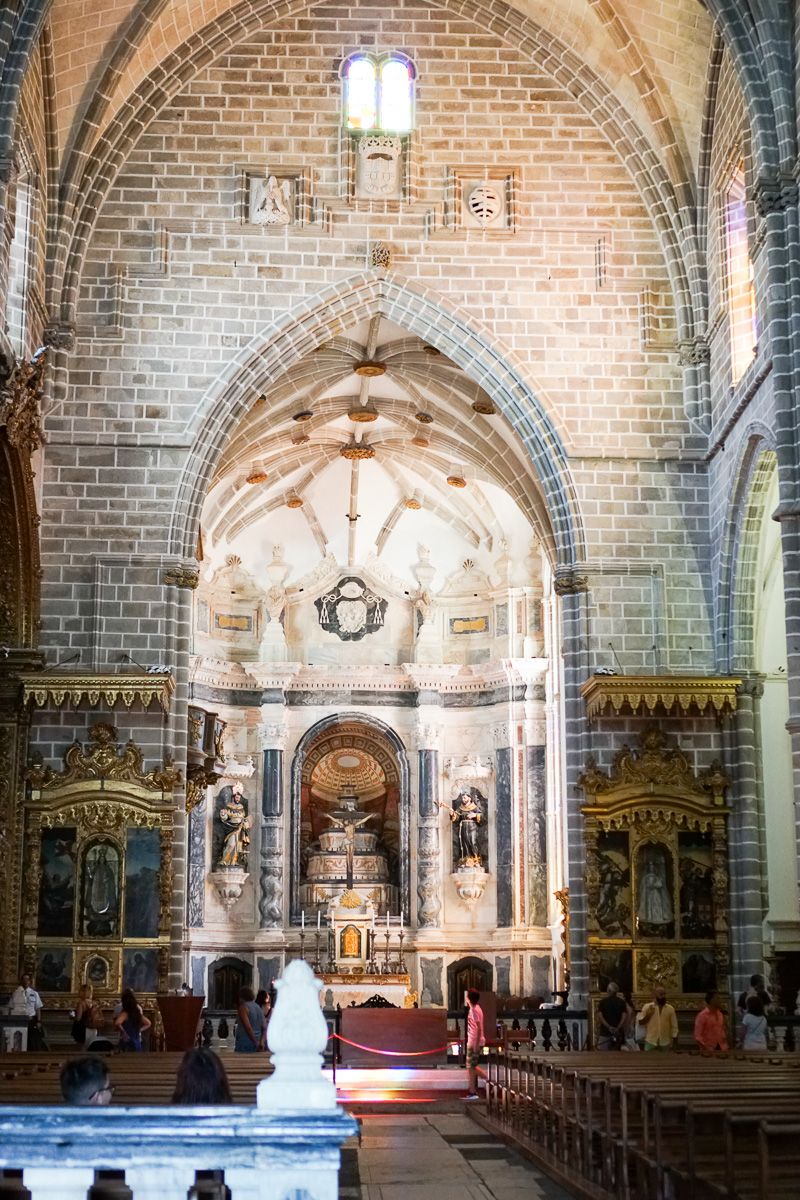


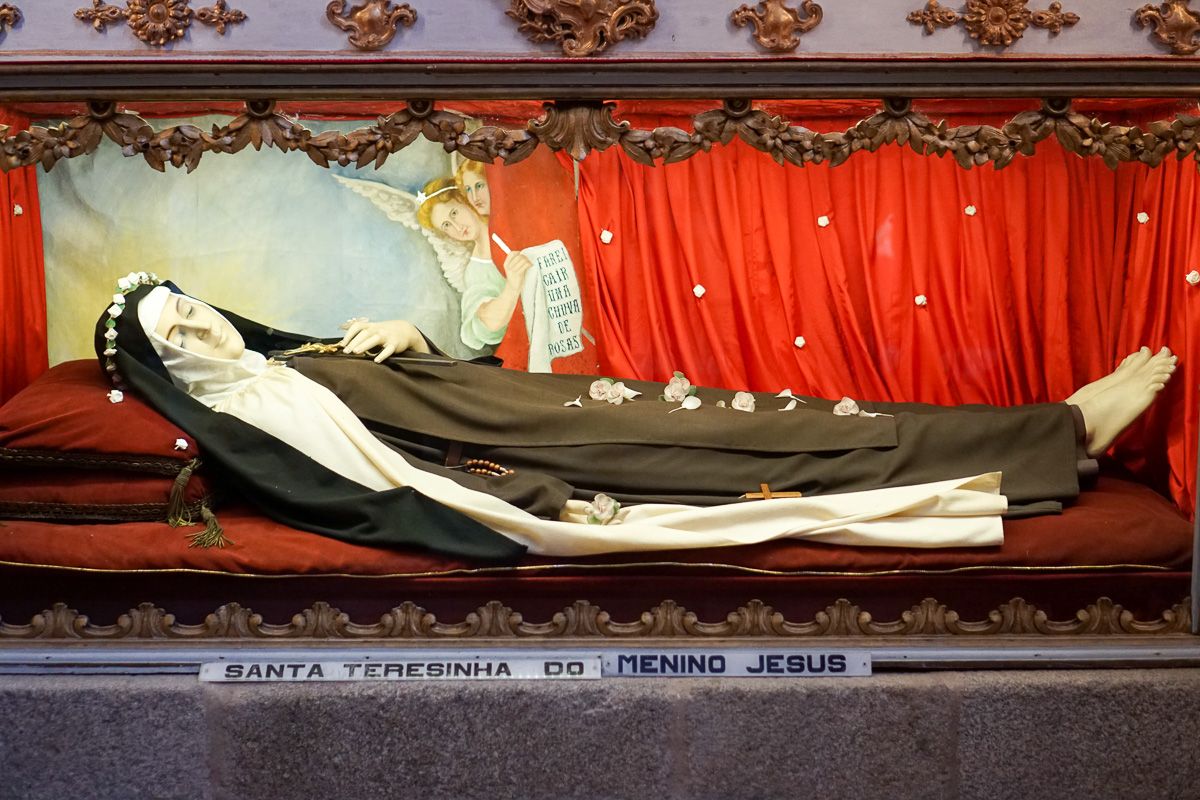
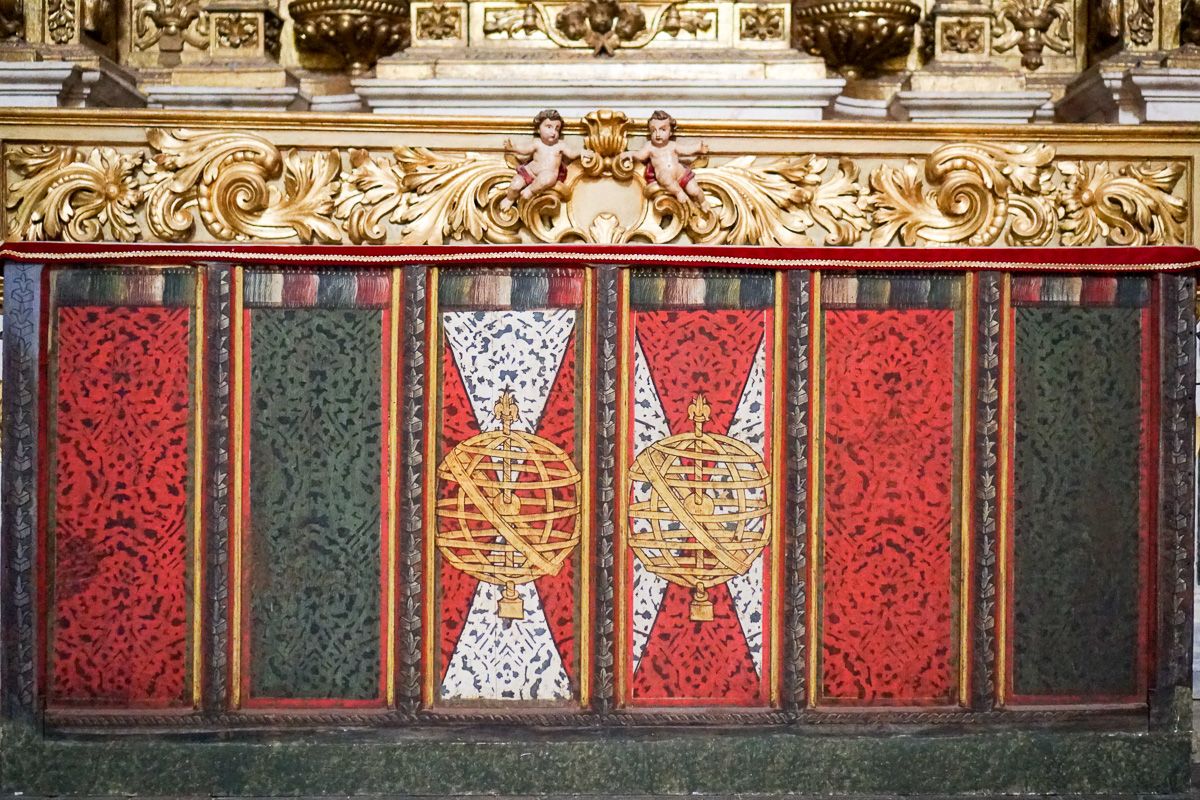
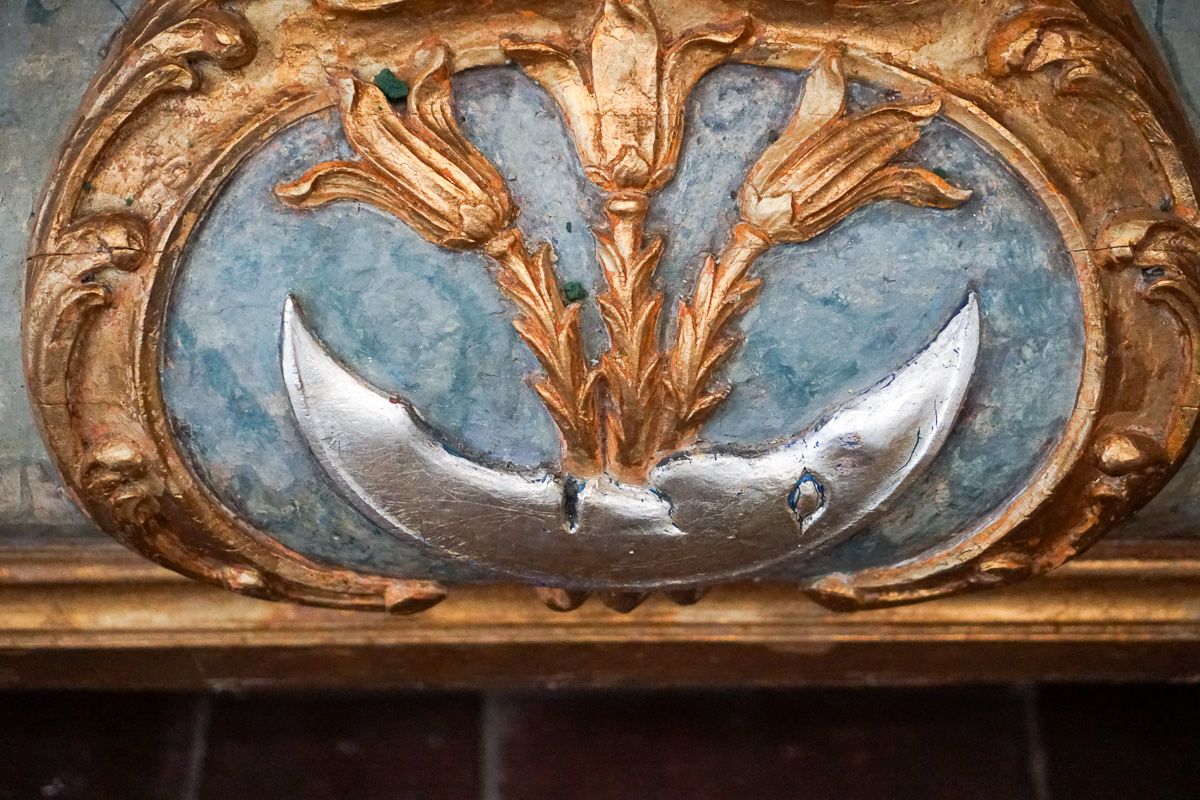
Igreja e Mosteiro de São Francisco/ St. Francis Church and Monastery
Then on to Igreja e Mosteiro de São Francisco or St. Francis Church and Monastery. It would be impossible to overemphasize the magnitude and splendour of this church with multiple chapels. I hope my photos give you some small idea of what we saw, as it is hard to describe. It was built from 1465 to 1550 in a Gothic manner. Note the Masonic symbols in the bottom middle picture above, something we also noticed in Sintra.


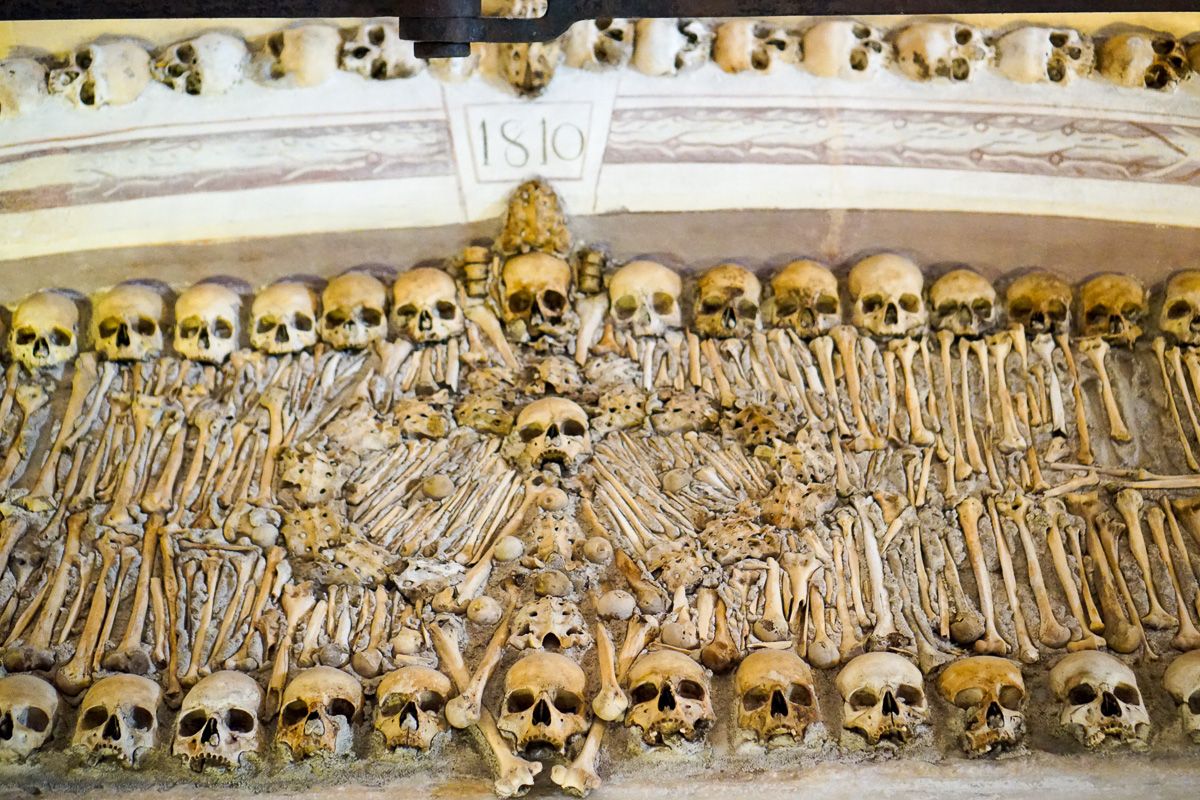
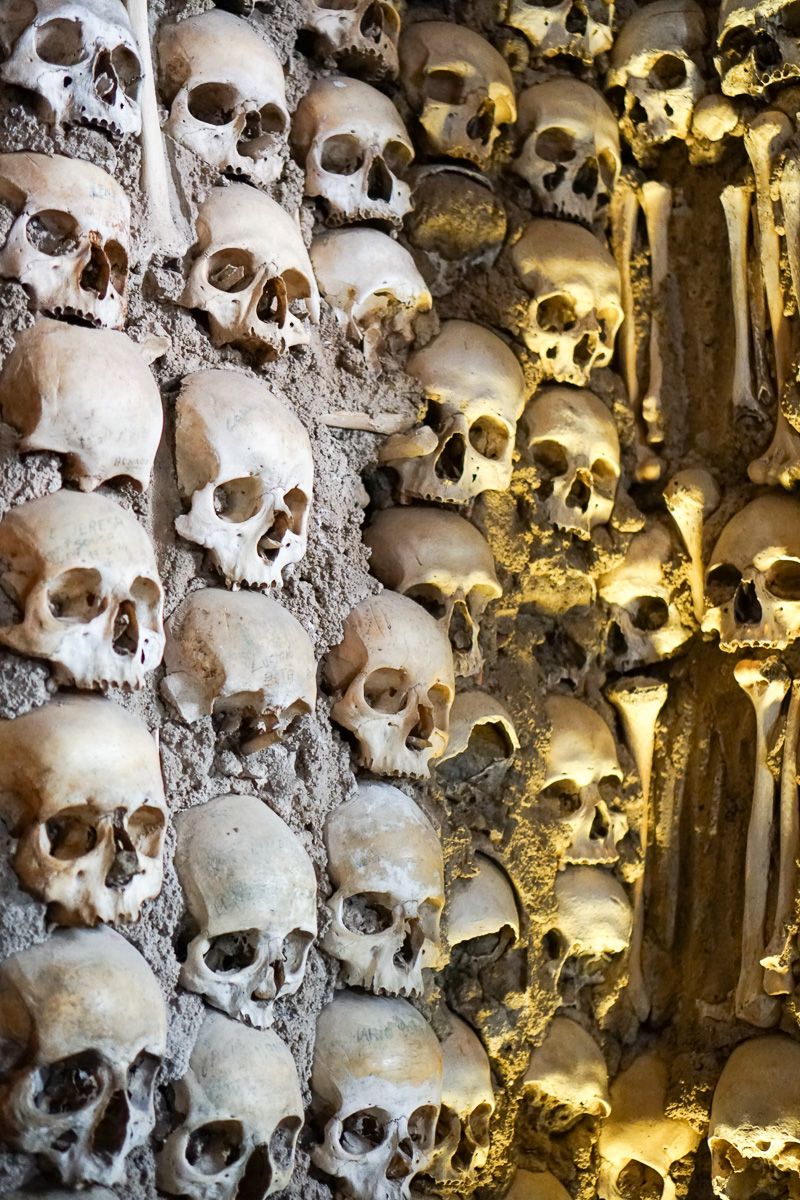

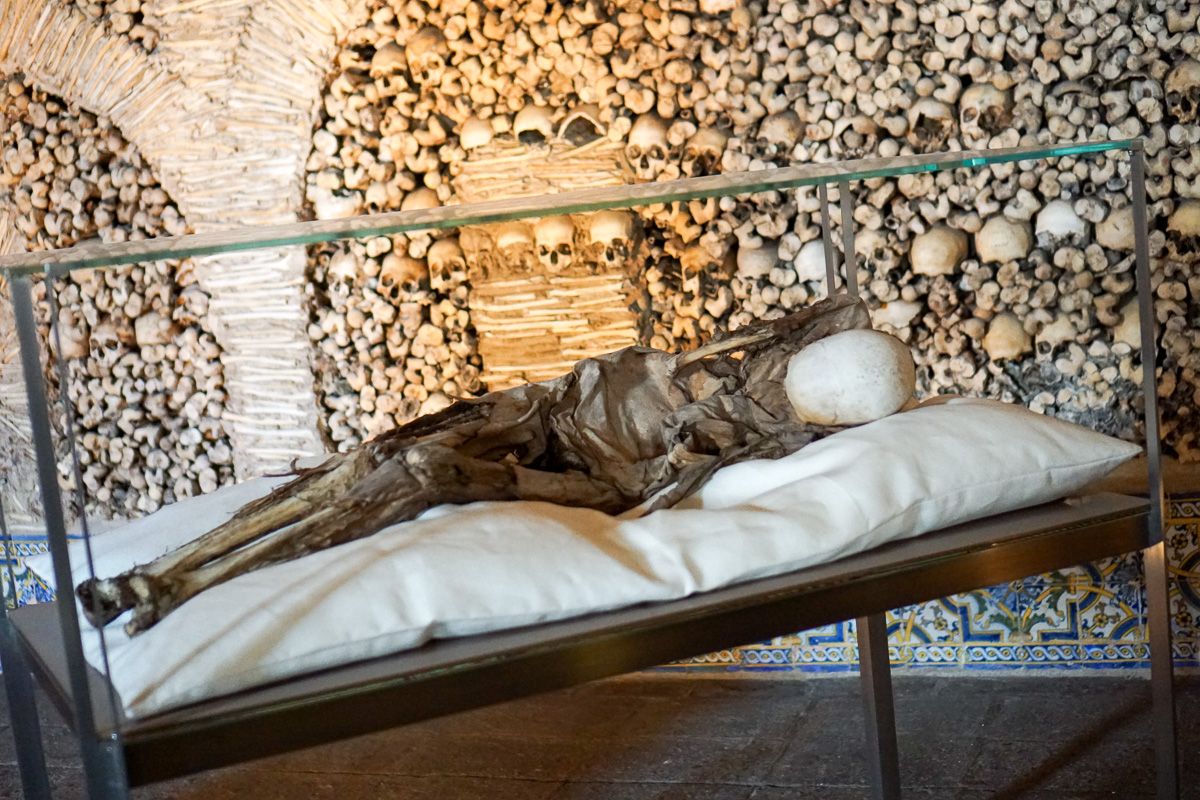
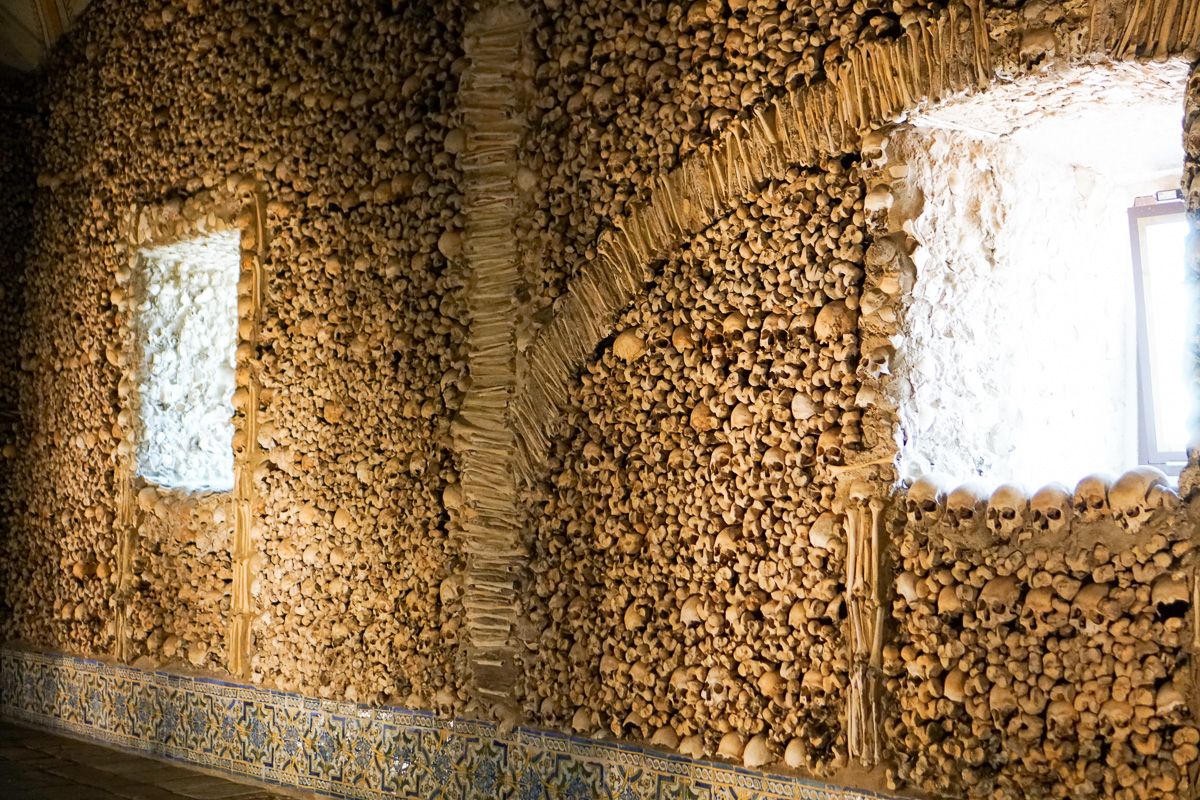
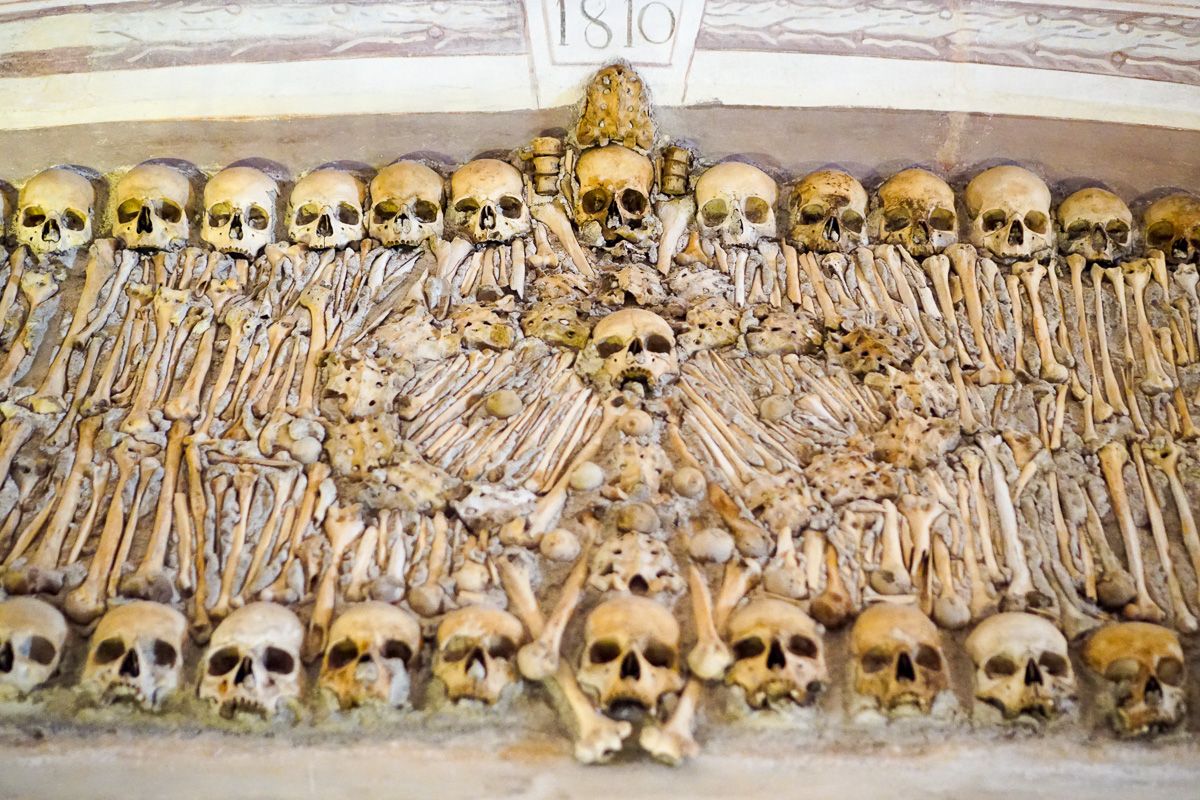
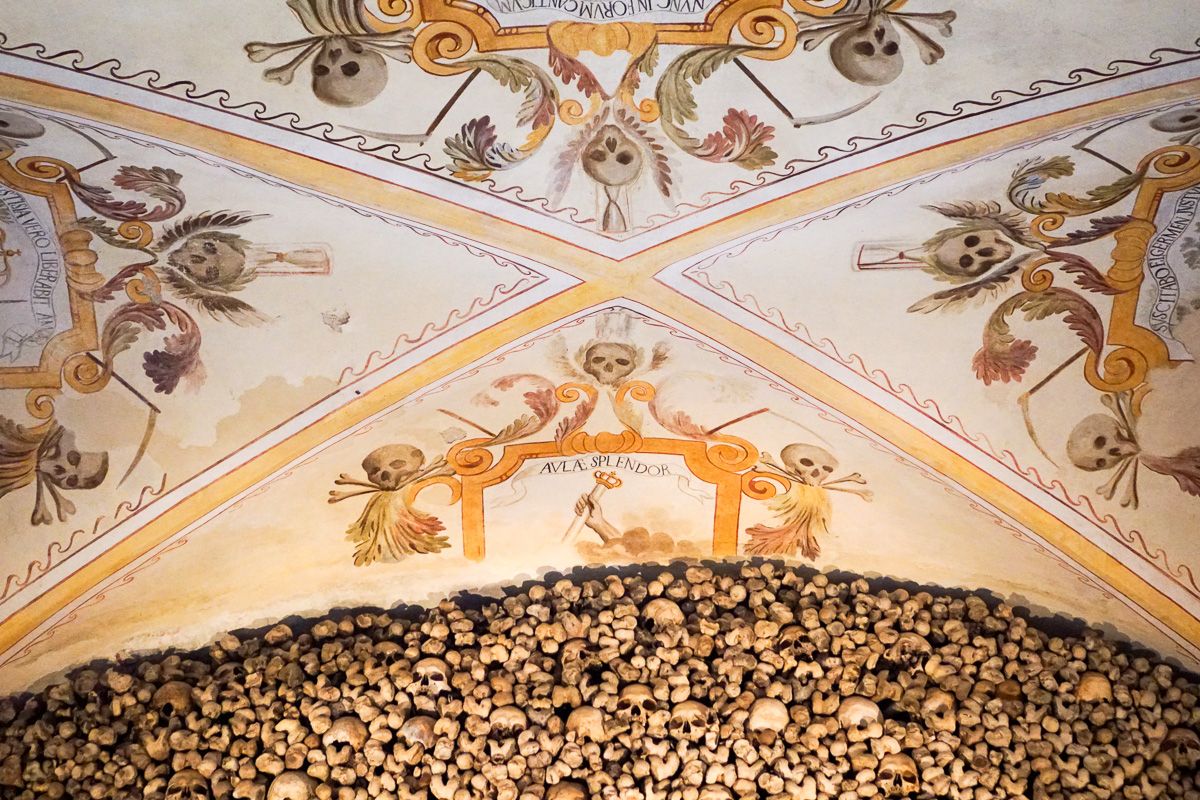
Capela dos Ossos/Chapel of Bones
Then on to one of the more unique and most visited chapels - Chapel of Bones or Capela dos Ossos. The Chapel is part of Igreja e Mosteiro de São Francisco or St. Francis Church and Monastery. This Chapel was build in the 1700 century by Franciscan monks. There are 5,000 skeletons of monks that were taken from dozens of church cemeteries. AT LEAST in that version, it was bones of monks.
I believe the actual truth, and what it states in the Chapel (article), was that there were 47 cemeteries around Évora and a lack of space. So the Monks decided to honour the bones by building the Chapel out of them and making room for new burials. "However, rather than interring the bones behind closed doors, the monks, who were concerned about society's values at the time, thought it best to put them on display. They thought this would provide Évora, a town noted for its wealth in the early 1600s, with a helpful place to meditate on the transience of material things in the undeniable presence of death. This is made clear by the thought-provoking message above the chapel door: "Nós ossos que aqui estamos, pelos vossos esperamos," or: "We bones, are here, waiting for yours."
After that, we were pretty Churched out!
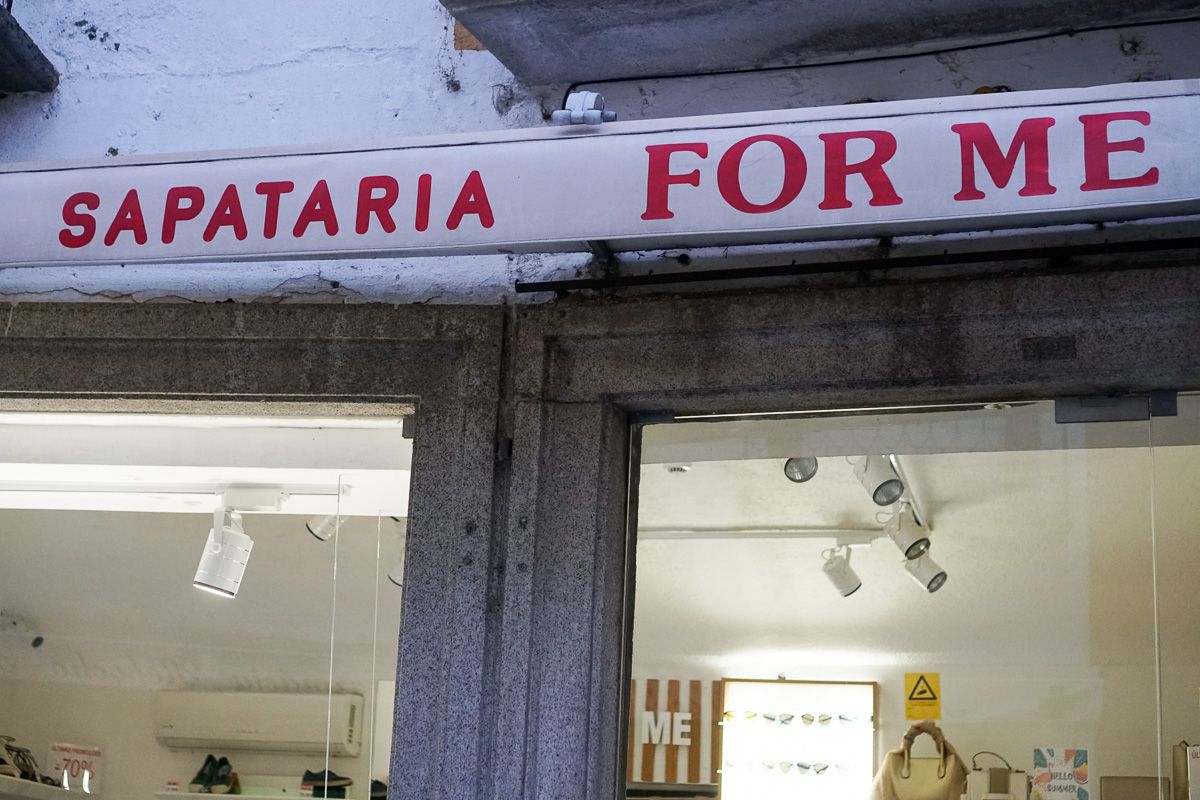

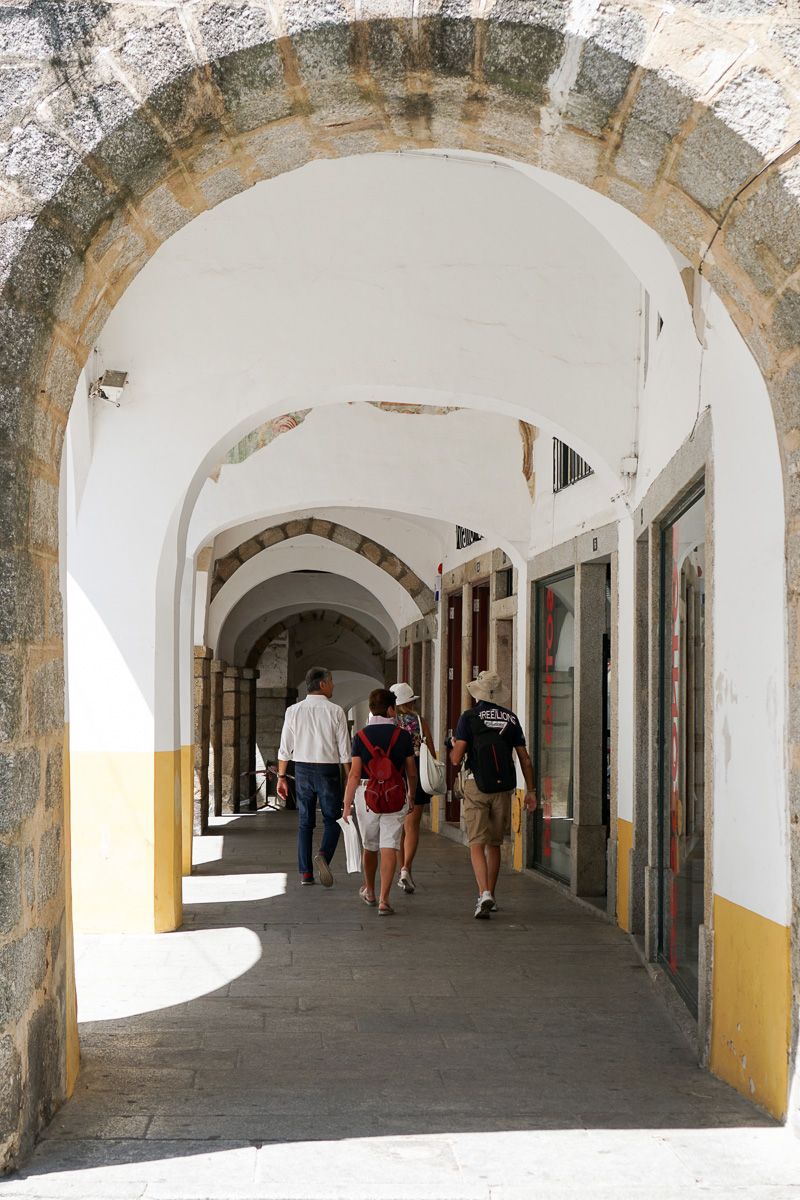
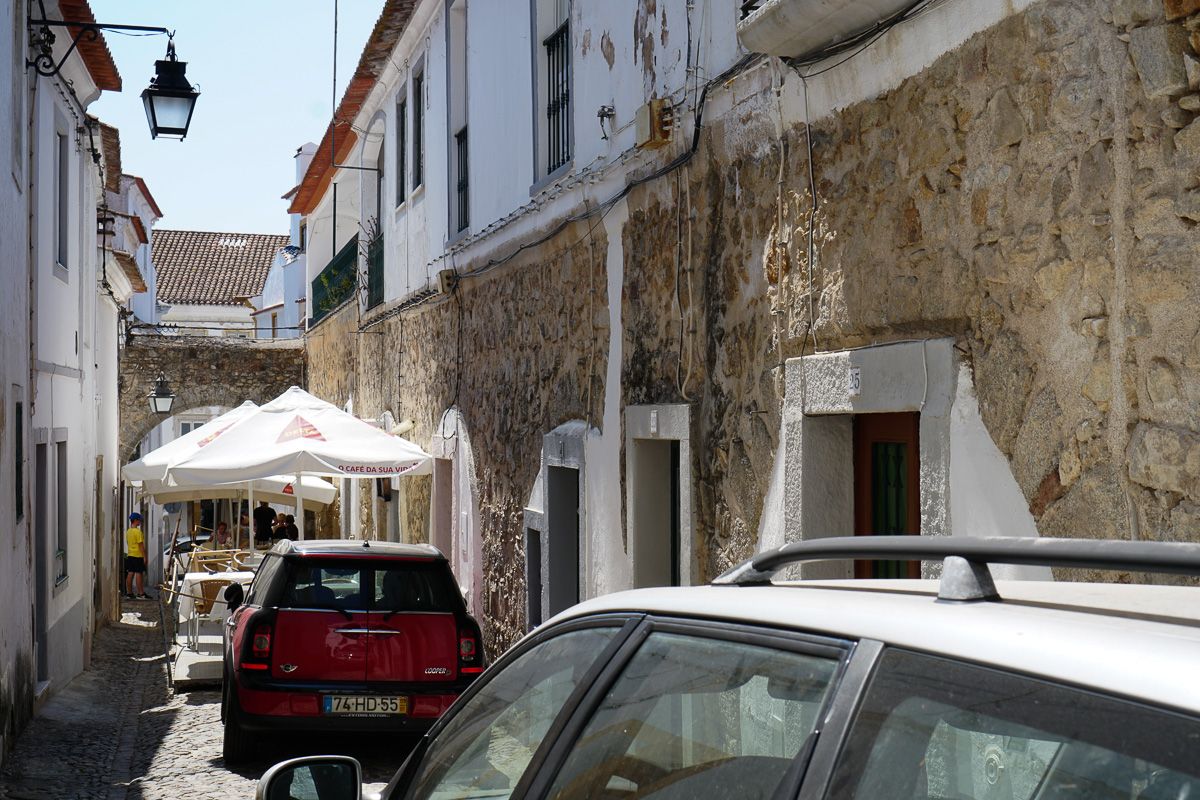
Now it was time for a little retail therapy. The shoe store above had these adorable denim runners made by Natural World. Easily washable, and believe it or not, they have the most delicious smell. I REALLY wanted the purple ones, but there were none in my size. I was willing to settle for pink IF I could figure out where to put them in my tiny backpack. There was absolutely no more room - however, it's incredible what you can do when you are very determined. I couldn't make an immediate decision. Just as we were leaving Evora, I decided I REALLY wanted them. I know, a MAJOR decision. When we got there and I went to pay, they realized that the shoes were two different sizes, and they didn't have any others in pink. As the shoes felt like they fit fine, I got them. Every so often, when I wear them, I trip on the toe on one side!
We also had sangria therapy - EVERY DAY. We found a patio in a square that made delicious sangria, and we became regulars! Remember, we were still dealing with 40+°.

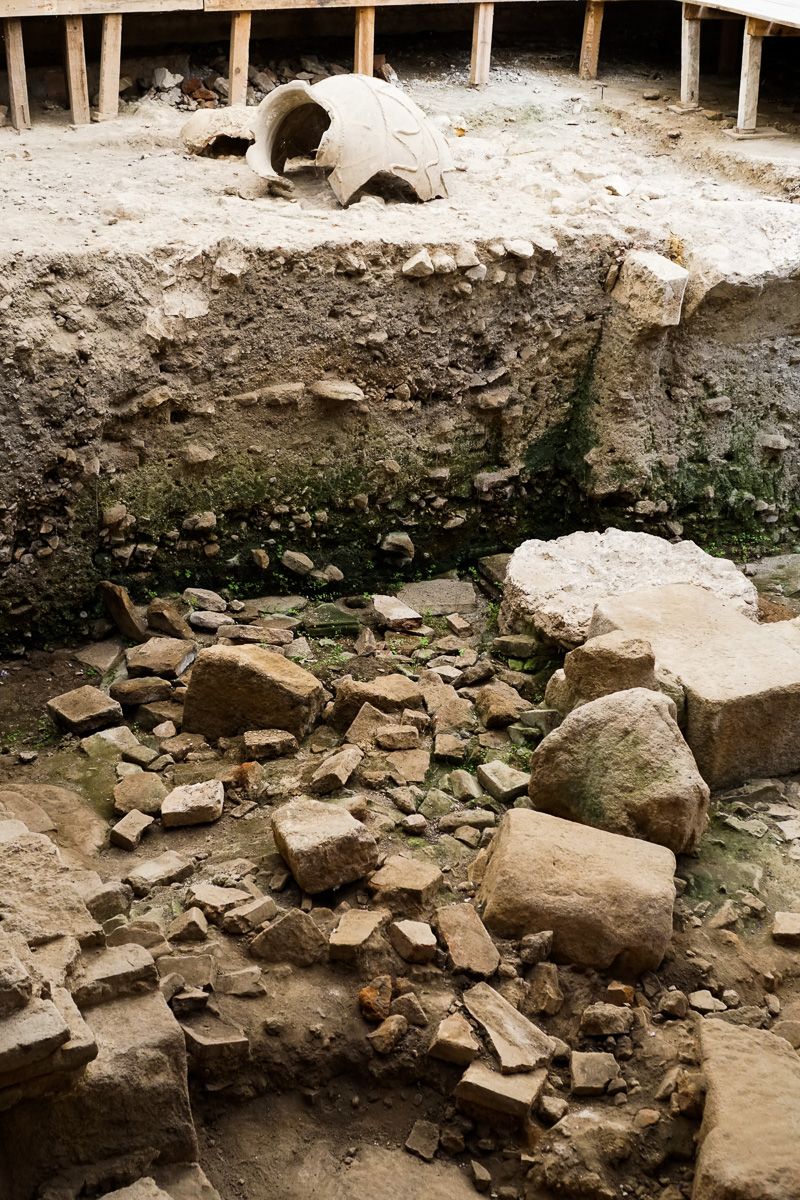

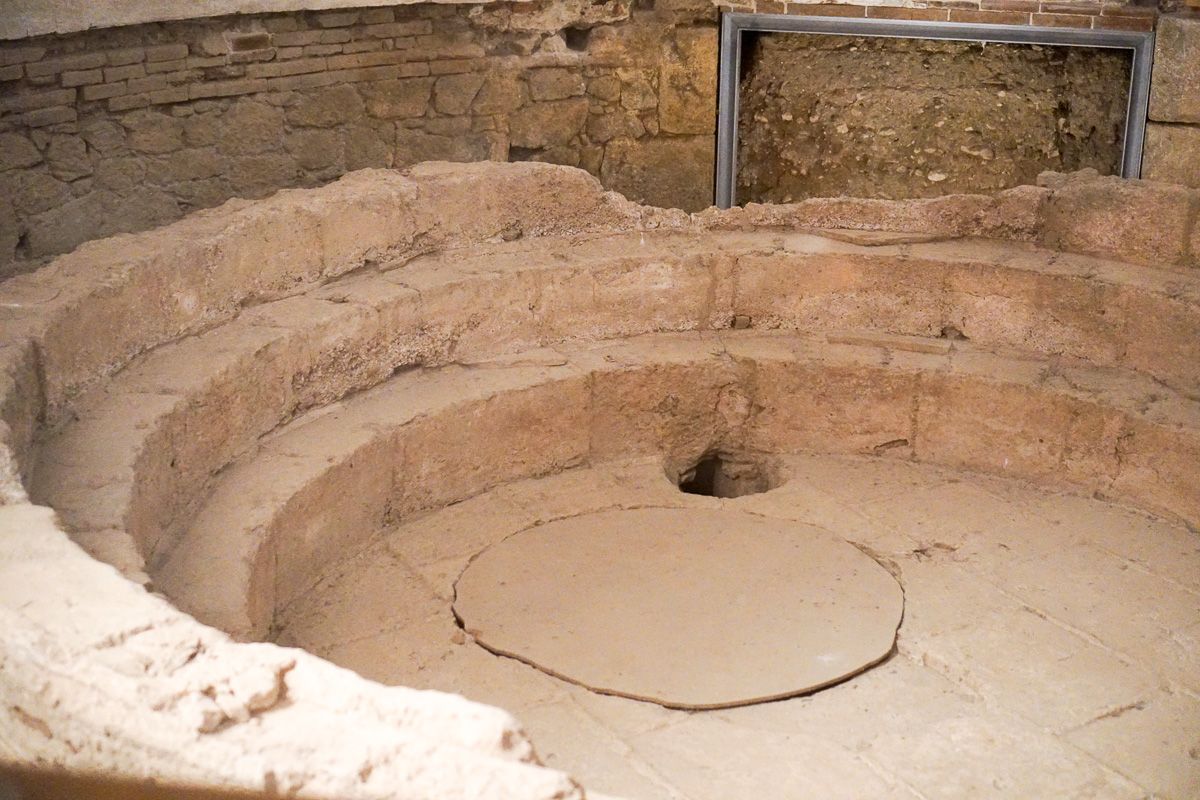
Evora's Town Hall and the Roman Baths
We did venture to two more historical sites. First, the Roman Baths, which you can find in Evora's Town Hall. They were discovered in 1987 when excavations were done on the oldest part of Evora's Town Hall building. The Baths date back to the 2nd and 3rd centuries.
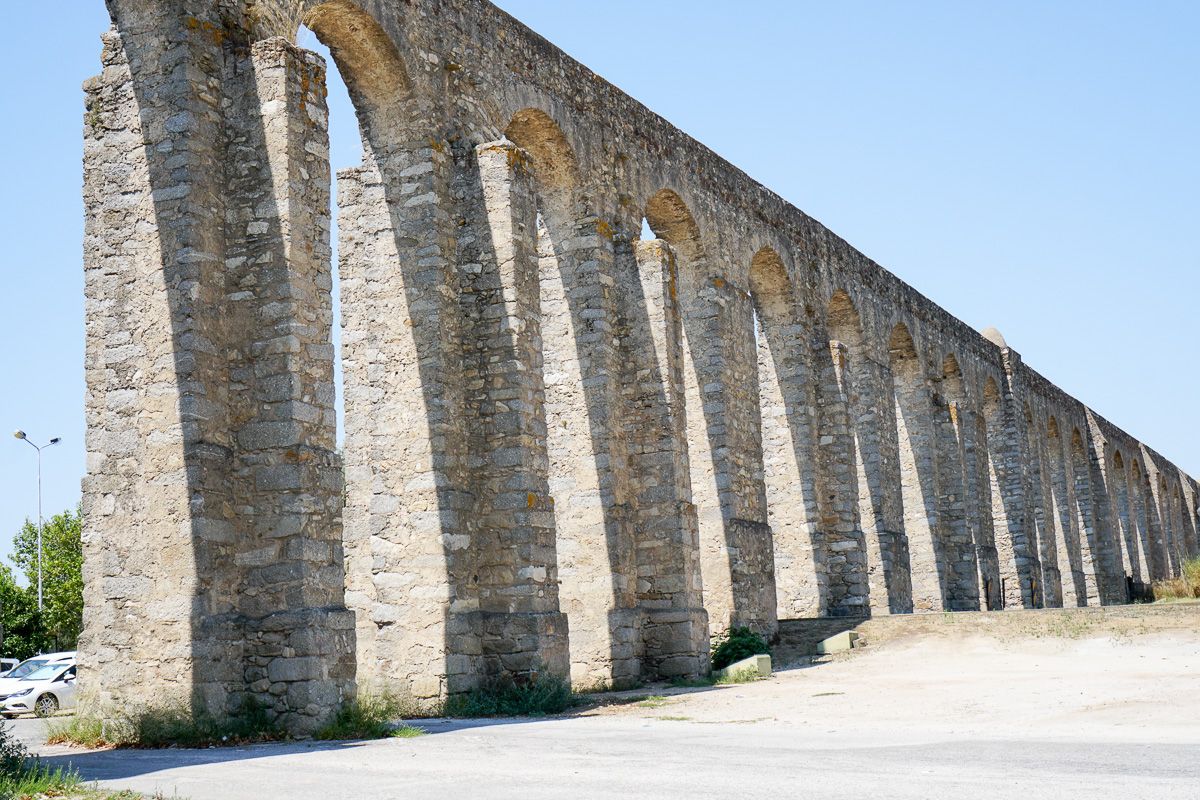
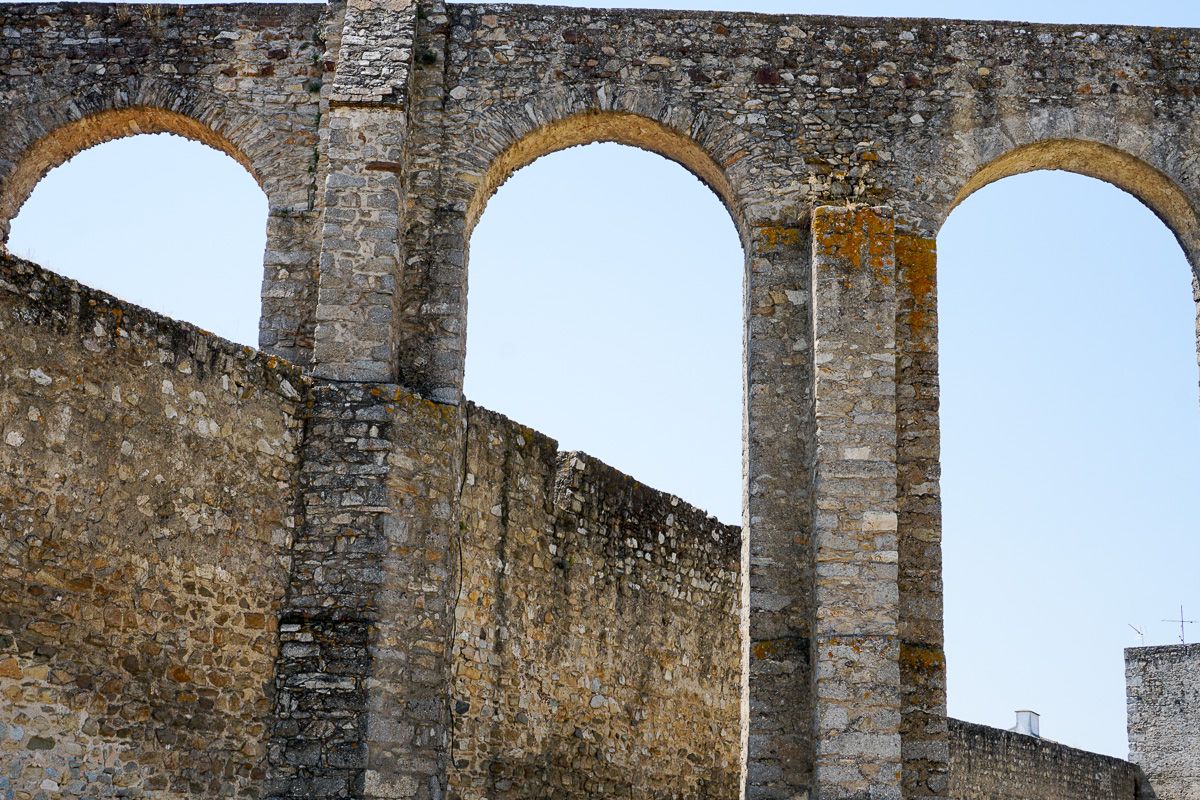


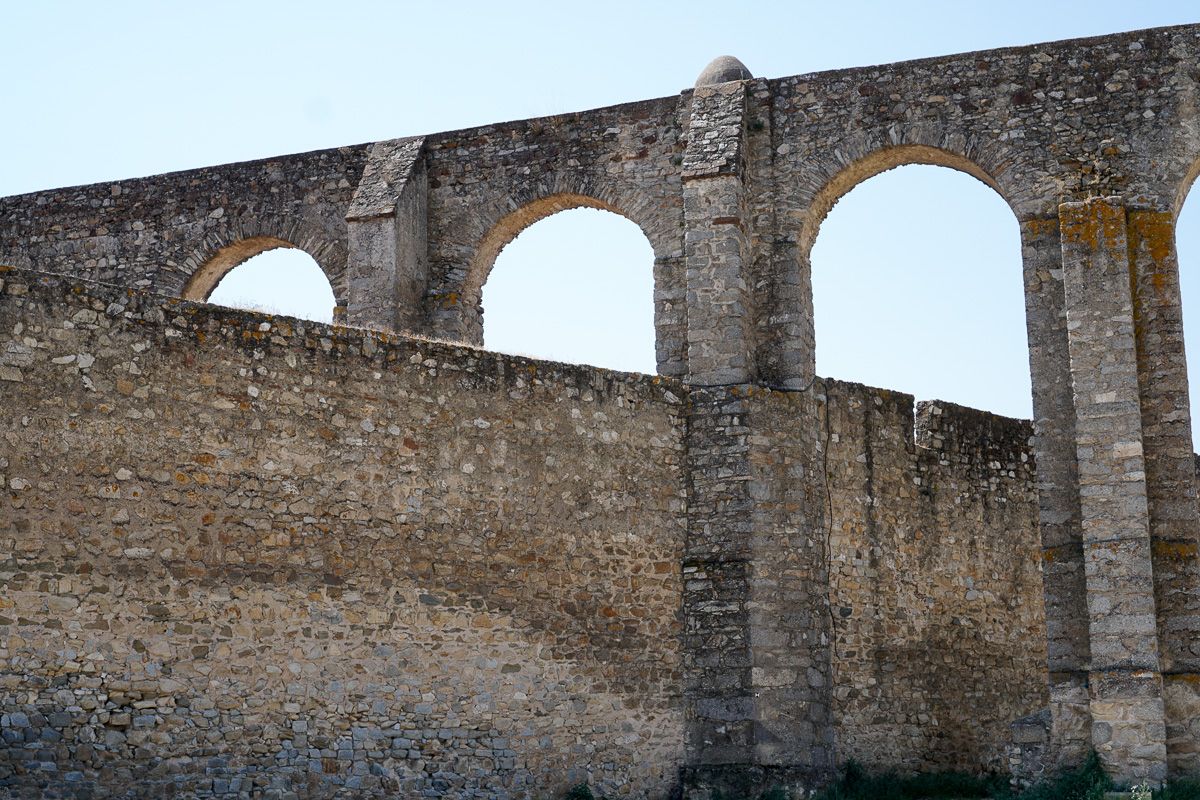
Agua de Prata Aqueduct
The other was the Aqueduct. "The construction of Agua de Prata Aqueduct was started by King João III in 1532. Under the direction of the royal architect Francisco de Arruda, 11mi (18km) of the aqueduct were built starting in Divor estate, where it gets its supply of water, to the centre of Évora."
The piping and granite arches were built in the Renaissance style and were sometimes laid over the old Roman aqueduct. Much of the aqueduct remains intact, although homes and shops have been built right into it in many areas. It is incredible to see.
We had one more day in the Évora area, and it ended up being a wonderful day in the country with a fascinating tour.
But the churches have taken up more than their share of space, so you will have to come back for that.
Until next time........

